The Samohi
Thursday, October 31, 2024 | Santa Monica High School | Volume CXIII - Issue II

Flag football dominates Ocean League for the second consecutive year - SPORTS PAGE 16

Op-Ed: western education crushes the human spirit - OPINION PAGE 5


Thursday, October 31, 2024 | Santa Monica High School | Volume CXIII - Issue II

Flag football dominates Ocean League for the second consecutive year - SPORTS PAGE 16

Op-Ed: western education crushes the human spirit - OPINION PAGE 5

Arata Sakamoto
Staff Writer
Metro has implemented their ‘TAP-toExit’ pilot program in Santa Monica, aiming to reduce fare evasion. The program enforces Metro riders to tap their fare cards when exiting the stations. Not only will this help ensure that riders have paid their fares but also adds an extra layer of security, decreasing criminal activities.

According to the data from Metro’s three contracted law enforcement partners, 94 percent of individuals arrested on the system for violent crimes did not own valid fares or TAP cards. To amend this, Metro has implemented the TAP-toExit program in order to prevent fare evasions and maintain a safe environment for their riders. In less than two months, the North Hollywood station saw a 40 percent decrease in reported crimes, fights, drug use and graffiti. Since then, Metro has expanded the program to all 10 end-of-line stations, including the E-Line’s Downtown Santa Monica Station on Sept. 3.
Metro aims to enforce this program at all stations, making sure that the riders are able to. However, Danna Garcia (’28), a Samo student who rides the Metro to school, has noted that the impact is limited as not all stations have implemented the program.
“I don’t see a difference because there’s other stations that don’t use [TAP-to-Exit], so other people can still get in,” Garcia said.
On Oct. 10, PTSA and College Center hosted the College Fair in Samo’s cafeteria and the Discovery Quad. There, over 80 local, regional and national colleges and university representatives gathered to set up stands. College Fair is an opportunity to introduce high school students to colleges they may be interested in. In addition, students can ask and receive helpful information, advice, and answers to their questions.
Libero Somaini (’25) found that the college fair was
Haley Castanaza (’26) has been elected to the Board of Education as the Santa Monica High School Student Board Member for the 20242025 school year.
Castanaza’s role as a student representative requiresv her to attend all district meetings, give new insights and updates and keep the community, board members and superintendent informed from a student’s perspective. She will be representing Samo as well as John Adams Middle School and Lincoln Middle School.
According to the Santa Monica-Malibu Unified School District, student representation allows for a more inclusive and representative environment. Castanaza described that in being given this opportunity, she acts as a voice for those that are unheard.
“[My position] gives me the opportunity to have a voice for other students on and off campus and inspire them,” Castanaza said. “What I mean by this is, it’s not just our school I wanted to represent, it’s also the incoming freshmen so they can also have a voice when they get to high school.”
Castanaza mentioned that she was inspired by her brother Nathan Castanaza (’24), who was a former Student Board Member.

“I liked watching him do his position, because I would attend the board meetings too, since they were on Zoom during the COVID era,” said Castanaza. “I like how he and the people in the board meeting spoke…so I think that kind of made me want to do the position as well, following in his footsteps.”

helpful in gathering new information about colleges and the application process. For this reason, he recommends the fair to others, noting that it will reduce their nervousness about college by allowing them to feel more prepared.
“I reccommend the college fair for other people because it allows you to get new information about schools,” Somaini said. “You can kind of get a little bit of a feel for it by talking to the people.”
thesamohinews@gmail.com
Sia Kresch Staff Writer
Proposition 36, if passed this Nov., will increase felony charges, turning some current misdemeanors [low-profile criminal offenses] into felonies [high-profile criminal offenses]. Additionally, the proposition would lengthen certain felony sentences and strengthen certain drug and theft punishments by requiring prison time.
The proposition has gained overwhelming support from the public, with Politico finding that 71 percent of prospective voters are in favor of its passing.
While California is usually represented by an overwhelmingly liberal electorate, Prop. 36 is a very “tough on crime” and some may argue conservative policy change. Former Samo student and AP Government teacher Nathaniel Munoz Acker (’83) notes the concerns many have had in regards to crime, and their reasoning for wanting stricter policies.
“It’s pretty shocking to see big groups of people going in and smashing businesses, specifically small businesses and many have become alarmed by this rise in crime,” Acker said.
Those in support of Prop. 36 believe that if the proposition doesn’t get passed, there is a chance crime will become worse and that the communities suffering will continue to do so due to the lack of prosecution for criminals. Many have witnessed their communities being affected by the lack of accountability, such as student Yasha Shaw (’25).

“The problem with having misdemeanors is it incentivises people; they don’t have to suffer the consequences of a felony,” Shaw said.
Proposition 47, which was passed in 2014, changed some low-level crimes from possible felonies to misdemeanors. This law has been associated by some with rampant theft. Voters are now being given the chance to reverse the established policy with the addition of Prop. 36. Although many see Prop. 36 as a positive step forward, others believe there are more pressing issues that need to be tended to first, like Samo Student Noah Pust (’26).
“In order to minimize crime, you need to solve the root cause through funding for education, specifically drug-related education, health care and the housing crisis,” Pust said.
The 2024 Greater Los Angeles Homeless Count found that approximately 75,000 people in the county are unhoused. Those opposed to Prop. 36 believe that if the proposition is passed, time and resources would be spent implementing the proposition into law instead of solving a root issue such as homelessness.
With California already running in debt, the proposition could further the state’s deficit. Many are opposed to the passing of Proposition 36 including Acker, who believes that the proposition could potentially worsen this issue.
“In California, we have this process where the legislatures are supposed to make a bill into a law, which requires funding,”
Editor-in-Chiefs
Aili Forster
Sara Javerbaum
Managing Editor
Sienna Bevan
Finance Manager
Cleo Topp
News Editors
Dalia Puchalt
Liam Sauer
Opinion Editor
Claire Harrison
Student Life Editor
Ryan Kim
A&E
Editor
Max Kehoe
Centerspread Editor
Emi Yamashiro-Herget
Photo Editor Manny Lopez
Acker said. “The state will have to come up with the money, which will cost us hundreds of millions or billions of dollars.” Acker also took note that the policy of increased jail sentencing illustrated in Prop. 36 could re-lead to the overcrowding of jails.
“Although I agree that certain punishments need to be stiffer, there is a danger with overcrowded jails again and lack of resources to get people into rehab,” Acker said.
On Nov. 5, the decision to or not to pass the proposition will be finalized. Prop. 36 can be voted for through mail-in ballot or at any nearby polling station.

Art Editors Kayman Mangan
Raha Ghoroghchian
Social Media Manager
Olivia Stephansen
Sports Editors
Addie Burns
Louis Rotgin
Faculty Advisor
Elizabeth Stapleton
Staff Writers
Athena Barefoot, Laurel Cohn, Ryan Colvin, Addelyn Fiore, Emma Godfrey, Alisa Ignatenko, Sia Kresch, Leo Lucente, Koi Lerner, Eugene Naruse, Yaretzi Preza, Arata Sakamoto, Kamerin Shakir, Imani Toler, Hope Wang
Addelyn Fiore Staff Writer
Schools across the country have witnessed an extreme mental health crisis afflicting their students.
According to Mental Health America, 20.17 percent of youth (ages 12-17) reported suffering from at least one major depressive episode (MDE) in the past year.
Even starker, the CDC found that more than 4 in 10 (42 percent) students felt persistently sad or hopeless and nearly onethird (29 percent) experienced poor mental health.
With college applications for seniors coming up, hours of homework a night and extracurriculars becoming overwhelming for highschoolers, there has been a rise in awareness of the pressure brought on students. Mental health is an invisible struggle that many students across the nation go through, although we may not be able to see it, it often leads to students having to struggle alone. The academic standard that students are being held to is becoming unmanageable and anxiety inducing to many.
Drawing from personal experience, Franklin Thomas (’27) offered insight into how he manages to prevent overwhelming anxiety.
“I’ve definitely had anxiety before whether it’s studying for tests or taking a test, it’s really about good time management,” Thomas said. “I think there are a lot of students here at Samo who deal with anxiety because of school and how hard it can be to manage.”
As Thomas alluded to, he is not alone in facing these challenges; many Samo students experience similar challenges to their mental health.
Numerous factors contribute to the observed decline in mental health amongst teenagers, one of the biggest ones being

social media. Doctor Braverman, Samo’s school psychologist, gave some insight as to why this may be the case for Samo students.
“Social media is really sometimes a highlight reel, so it’s very easy to compare or feel less than or worry about what’s going on when you can see what everyone else is doing,” Braverman said.
Overall social media shows unrealistic portrayals of many peoples lives and it can present a fake image, which can lead to unhealthy comparison. Comparison to others can stir up many feelings of insecurity, anxiety, or depression.
Another contributing factor is the insurmountable amount of pressure from school, from getting into college to having to perform well in sports and various other responsibilities.
“I think it is really stressful being a teenager and having the day-to-day extracurriculars or family drama, maybe relationship stuff going on and then adding schoolwork and homework that’s a lot for one person, especially during your developing years,” Braverman said.
“I try to not overwork myself because I’ve done that before and it never has good re-
sults both academically and mentally and so I think it’s all about rewarding yourself for the little things after doing time consuming school work,” Thomas said.
All of these various responsibilities are a lot for one teenager to carry, let alone go through by themselves. But at Samo, students don’t have to go through these struggles by themselves; there are numerous resources available on and off campus, one being Rosebud.
Chrys Bader, co-founder of Rosebud, developed the innovative AI self help journaling software in order to improve the mental health of his users. Rosebud’s main goal is to help its users reflect inward, improving their overall mental well being.
“My co-founder and I actually started this company five years ago and the initial mission, which is still true today, was; can we make technology for good that actually has a positive impact,” Bader said.
Rosebud has accomplished this goal by helping 50,000 users per year. The organization offers student discounts to ensure the software is available to all struggling teeangers across the nation, including Samo students.
Not only are there resources off campus like Rosebud, but there are various resources on campus for students.
“This school does so much for mental health. We have everyday walk-in counseling, all teachers are trained and have ideas of how to provide social support and we have 3 full-time physiologists on campus, Braverman said. “There are almost 200 clubs [on campus] providing social/emotional connectedness and so many other programs.”
Overall Samo provides students with a diversity of resources and no student should have to struggle alone.
thesamohinews@gmail.com

A recent study published in the American Journal of Psychiatry found that taking ADHD medication may lead to a greater risk of developing psychosis or mania. ADHD medicine is one of the most common prescription medicines among adolescents. According to the National Institute on Drug Abuse, 15 percent of high school seniors reported use of ADHD medication in 2022. This figure may translate to roughly 400 kids at Samo.
The study conducted by Dr. Lauren Moran, a Johns Hopkins-educated physiatrist and researcher, found that patients taking high doses of amphetamine ADHD medications [such as Adderall, Vyvanse, and dextroamphetamine],
were 5.3 times more likely to develop psychosis than patients taking no stimulants. An increased likelihood of developing psychosis was found among medium-dose users as well, however, the study did not find significant data to conclude whether taking low dosages of the aforementioned ADHD medications is associated with an increased risk of psychosis.
ADHD is a chronic disorder which often begins during childhood and can cause attention-difficulty, hyperactivity and impulsiveness.
Daniel Hedges (’25) has been on some form of medicine to treat ADHD for 9 years.
“Attention-deficit/ hyperactivity disorder is when you can’t sit still, you’re fidgety, you have a hard time focusing,” Hedges said. “I’ve been on ADHD meds since 3rd grade
because I couldn’t focus in class and the teachers didn’t want to deal with me.”
Hedges takes a medium, albeit unconventional, dosage of ADHD meds.
“Right now I’m actually in limbo between two different medications,” Hedges said. “For Vyvanse, it’s 40 milligrams and for generic Adderall, I’m prescribed 30 a day but I only take 20.”
Hedges recognizes the potential downsides of taking ADHD meds and endorses the use of more natural alternatives to stay focused.
“Personally I think that ADHD meds are not necessarily beneficial to the person with ADHD at a certain point because you become reliant on them, but they’re very helpful when you need to study and you can’t focus so you need assistance with that or if you have
writer’s block and try taking meds sometimes it works,” Hedges said.
“So it’s beneficial in that sense but I wouldn’t say that medications are beneficial to the general society because there are other things like coffee that are more natural rather than a synthetic drug that can do very similar things.”
Despite recognizing the threats Adderall and other ADHD meds pose, Hedges is reluctant to switch to more safely viewed alternatives, such as Ritalin. The aforementioned study discovered there was no increased risk of psychosis with Ritalin, which isn’t an amphetamine.
“I’ve already been on Ritalin and it caused a lot more problems for me than solutions,” Hedges said.
“I had a lot of stomach problems, I got acid reflux from it and it didn’t really help with my focus. So no, it just doesn’t work as well.”
Samo graduate and current NYU senior, Harrrison Newman (’21), has been on a medium dosage of ADHD drugs since 2013.
“I’ve been on meds since fourth grade… I started on Concerta, I don’t even remember the dosage it was so long ago,” Newman said.
“Then in early middle school I was on 70 mg of Vyvanse but by freshman year of college it started making me insanely anxious so I switched to Adderall XR 40 mg and then when the shortage hit I jumped between dosages and took regular Adderall for a while. I’m on Adderall XR 30 mg now.”
Newman is aware of the risk Vyvanse and Adderall pose to his health.
“Girl, I better not get psychosis,” Newman said. “I might have to
switch to Ritalin.”
The most commonly prescribed ADHD medications [excluding Ritalin], are Amphetamines, which have been nicknamed “speed” for their stimulant properties including Adderall, Vyvanse and Crystal Meth, among others.
Amphetamines are stimulants, meaning ingesting ADHD drugs or other stimulants increases the activity of the central nervous system.
Marc Dingman discusses the biology of Amphetamine and its effects on the brain on his YouTube channel, Neuroscientifically Challenged.
“Amphetamine disrupts the storage of monoamines and synaptic vessels,” Dingman said. “Amphetamine is able to cause the monoamine transporter proteins to run in reverse leading to the increased release of monoamines especially dopamine and norepinephrine and increased levels of those neurotransmitters in the synaptic cleft. These elevated monoamine levels can have various effects on different parts of the central nervous system.”
The effect of Amphetamine on the central nervous system can be the development of chemical dependence or conditions such as mania or psychosis.
It is important for high schoolers with ADHD to be aware of the risks ADHD drugs could pose to their health and make an informed decision with their psychiatrist on how they choose to treat the disorder.
Eugene Naruse Staff Writer
On Sept. 30, Governor Gavin Newsom signed Assembly Bill 1780, prohibiting legacy and donor preference admissions for private universities in California.
to impose this ban in both pub lic and private higher educa tion institutions following Maryland, with the Uni versity of California system banning legacy prefer ences back in 1998. Colorado, Illinois, and Vir ginia all also prohibit legacy ad missions, but this ban
only applies to public institutions.
The bill was originally pitched by Assemblymember Phil Ting (D-San Francis co), following the of Southern California (USC), have been known to give preferential
treatment to applicants who have connections to donors and graduates. According to Ting’s website, data showed that in the 2023 admissions cycle, 1,791 students were admitted to USC through these connections, while Stanford admitted 295 stu -
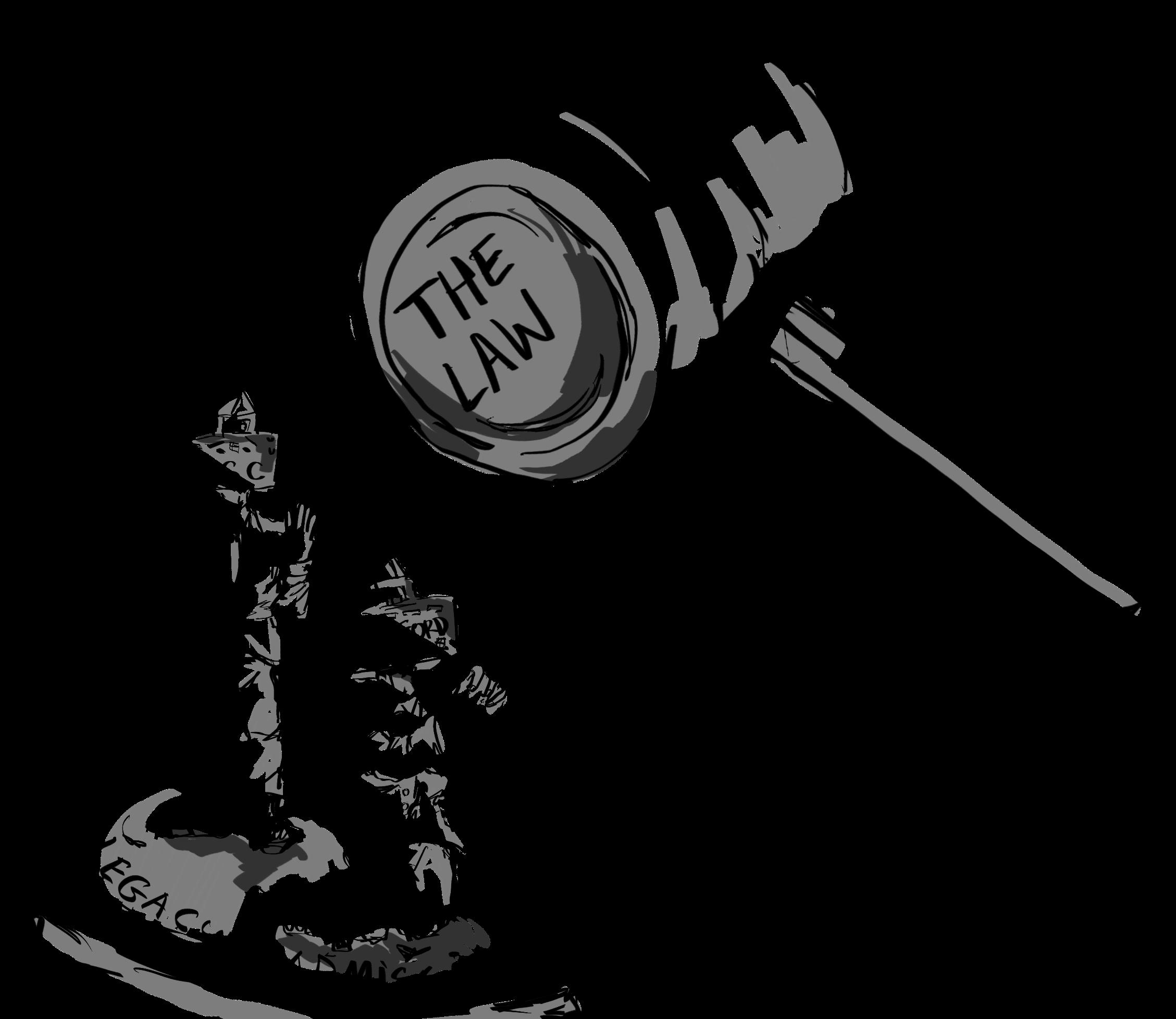
These universities will be subject to annual reporting of specific numbers to the Legislature and the Department of Justice to ensure that they comply with the new law. If not, the bill would require the department to post the names of the institutions that violate the prohibition on its website. While the original version pitched by Ting proposed strict penalties, there are no specific punishments or fines for universities that continue to accept legacy admissions after the bill is enacted.
Regardless of there being no penalties for universities, Ting believes that this bill will help ensure a more equal and inclusive college admission process and most universities have also already indicated that they would comply with the law.
Ernesto Flores, one of the three college counselors at Samo, gave his input on the
“Ever since COVID, with things like the SAT and ACT, many admissions offices have been reevaluating the way they value applications and experience, so I wasn’t
too surprised that something like legacy admissions would be impacted,” Flores said. “I was just at the USC conference a few weeks ago, and they were talking about how their [legacy admission] numbers have dropped significantly from low twenties to low tens, and also how they clearly see that there were people who may have been qualified but missed out on spots when building a class, so I do think that legacy admissions can impact students negatively.”
Newsom has taken other steps to improve access to higher education in California in the past. These include grants toward tuition aid for low-income students, as well as investing in college affordability for all students by supporting the development of affordable student housing and further accessibility of educational resources. Flores, who looks towards the future of college admissions with optimism, acknowledged that this bill is a significant step in an ongoing effort.
“Overall, I see more changes coming in the future, as the application system is always a continuous process,” Flores said. “It’s great for colleges to reevaluate what their practices are and try to figure out what’s the best way to then build off of those already in place and make them more clear.”
The law will take effect in Sept. of 2025.
thesamohinews@gmail.com
Santa Monica is the most expensive city to conduct business in, according to a recent study performed by Claremont McKenna College’s Rose Institute. The study analyzed a set of cost-related factors in 216 cities all across the nation. There were seven sections of the study- business license fee, utility tax, sales tax, minimum wage, average community rent, crime index and housing affordability index. Each city was ranked on a scale and Santa Monica placed the worst within every section of the study.
There are over 9,000 businesses in Santa Monica, with more than 80,000 employees. This includes the families of many Samo students, who may see these negative effects reflected in their home lives.
Fransisco Bejarano (’26), who’s mother owns a small local plant nursery named Just Filo, has personally witnessed this struggle. Bejarano believes that these smaller businesses are struggling due to a noticeable lack of people wandering on the streets, possibly caused by an increase in homelessness and people feeling endangered if they pass by. In fact, his mother’s business has had days where no one was walking to the shop. “She preps up her shop, spending all that time, for no one to walk in,” Bejarano said. “It’s such a shame because she spends a lot of time and if just one person walks in, I think it makes her day brighter because it makes it seem like they walked in for a reason…
and it makes her happy that she could help.”
Bejarano has also commented on how his mother’s struggling business affects him. He sees his mother feel worn down and unhappy due to the lack of customers.
The study noted that the housing crisis is one of the major
Blue Plate Oysterette, which resides in downtown Santa Monica. Rush discussed the problematic situation her business has faced with the homeless population in Santa Monica. She talked about her experiences with them, from people sleeping on their patios to getting told that someone was going to kill them.
to the unhoused living there. She also mentioned how, simultaneously as Santa Monica loses business, the City is charging more for outdoor dining, along with raising rents, raising the minimum wage and the required PTO, as well as health and other costly benefits. Rush is concerned with the lack
in Santa Monica; particularly when compared to other parts of Los Angeles.
“In speaking to many of my colleagues who own restaurants in other parts of Los Angeles, they are not having the same problems,” Rush said. “I am only sharing this as I have heard many rumblings of business owners fed up and wanting to leave Santa Monica to safer communities. As I said [on the incidents with homeless people discussed prior], this is no longer a random occurrence, it is every day in Downtown Santa Monica.”

contributing factors to the high business costs. Businesses have higher wage expectations for any workers so that they can meet the demand of living in the city. However, high labor costs might not be the only problem that comes from the housing crisis. In 2023, the Westside Current published an article written by Jennifer Rush- who owns a restaurant
“We invite you to come and spend the day with us working outside,” Rush said. “Seeing the daily challenges we are having interacting with people on the street who are scaring locals, tourists and staff away from Downtown, Santa Monica.”
Rush believes she is losing business as people don’t want to go to downtown Santa Monica due
of change in laws to attempt to fix these issues—specifically how she’d gone to multiple city council meetings, only to leave with none of the issues she was there for being addressed. She believes that not enough people, especially those who are against the changing of the current situation, have borne witness to the chaotic experience of owning a business
Tess Sloan (’25) is the president of the business club.
From what she has seen, the property tax on business is exceptionally high—so high, these businesses cannot function. The business club is attempting to combat the issues that arise with business, especially within Santa Monica. The club teaches financial responsibility for upcoming entrepreneurs, which can help when attempting to set up a business.
“As a club, we try to support people that are interested in business, industry and market,” Sloan said. “If they come up with businesses [we].... try to raise money for those businesses and help them through the process and teach them about the process and being financially responsible.”
In the end, Santa Monica businesses are struggling to stay afloat. Homelessness, inflation, wages and more are all problems that people who own businesses must find a way to balance. But, it’s not proving to be easy.
thesamohinews@gmail.com
Elliot Ho Contributor Writer
A majority of students feel depressed, anxious, inattentive, broken–and it’s unsurprising. Days and weeks blur together like mush, repeats of a boring dream. We push through weekdays waiting on weekends for respite. Even then, the assignments pile up and leisure time becomes work time. Why we subject ourselves to this condition, unopposed, seems to stem from a general apathy and nihilism.
We can’t even imagine an alternative. The answer to the question “Why now is there such a historic epidemic of mental illness?” requires that we politicize mental illness away from only being the biological fault of the individual. Students are simply psychologically responding to a stressful, dangerous and gray environment in a way that you would expect them to. We are chronically overworked, are faced with an uncertain and bleak future, with lives whose purpose seems to be created from more of an imposition than of free will. Students are constantly belittled and condescended, simultaneous to the pressure that we are young adults who should be making decisions for ourselves. We are adults when we are told to “manage our time better” and assume the individual responsibility for our shortcomings in reference to workload, yet are children when it’s time to order us around. Our era is one where the communities and social networks have been dissolved into a digital void, leaving students feeling anxious, hopeless and ultimately alone in all of this.
Students realize that they don’t even have the productive energy they need in order to keep up in school. They rush to get prescribed stimulants to give them the energy to work and antidepressants to stay motivated day to day: a phenomenon that is also very beneficial to the profit margins of pharmaceutical companies. The surge in diagnoses of the “attention deficit” student also says more about late capitalism than the people diagnosed. It reveals that students are being asked to stretch their attention spans and mental energy for more than is natural. The way we consume
information has become shorter and shorter because we have lost the energy or motivation to do creative or intellectually challenging work in our downtime. We crave any fraction of dopamine or pleasure because of how much is already being asked of us day to day. It’s important to ask ourselves, is this really all education can or should be? In school, we’re drawn to compete instead of collaborate. We explore subjects not solely out of interest or passion, but with the fear we’ll be deemed useless by employers or admissions officers if we don’t. While what we are studying may be beneficial to capitalism—through our studies the labor force gains millions of young specialized workers, used to being overworked-but it’s clearly not beneficial for the human spirit, in fostering community, collaboration, compassion or empathy. This is represented in the unprecedented and historic rise in student and youth rates of suicide, violence, depression, anxiety and loneliness. A CDC report found that “Among US high school students in 2023: 40% reported persistent feelings of sadness or hopelessness in the past year…20% reported seriously considering attempting sui
cide.” So much of our potential is diminished by education’s black-and-white thinking. People can be bad test takers. People can be bad at school. This doesn’t mean they are incapable of learning. Even if you are good at playing the system, becoming the “perfect” student just isn’t enough anymore. What used to be over-achievement has become the bare minimum in applications. The cultural pressure to attend a “prestigious” college has never been stronger, but even if we somehow outcompete our peers and get into our dream schools, the end result is wholly underwhelming. PhD students are working as waiters and sleeping in their cars, struggling in an increasingly competitive labor force to pay off debilitating student debt. According to NPR, around 1.5 million college students are homeless in the U.S and the total student debt is currently 1.74 trillion dollars. It’s vital to remember that the scales used to
worker you are, is not a genuine reflection on your worth as a human being. In a free society our value would be measured by our community members on the capacity to grow and change, on selflessness, on love and compassion. These qualities are systematically being pushed out of us so as to be less instinctual and natural because the system is ideologically opposed to all of them; they are unprofitable-and therefore useless ideas.
To create a future we want to live in, away from the present boring dystopia, we must rapidly educate ourselves to imagine new alternatives. Education has a liberating, revolutionary potential when used by communities to dismantle the status quo. You are not alone, you are not worthless, you are alive, breathing and struggling for freedom under a machine much more powerful than yourself. So truly live!

thesamohinews@gmail.com
Over the past 15 years, healthy lunches have been requested and promoted by school officials and we’ve seen more protein and vegetables implemented to student diets. Yet students with celiac disease have not been included in these new healthy lunches. Celiac disease, an illness caused by an immune system reaction when one eats gluten, is incred ibly common, affecting 1 in 100 people. Eating gluten with Celiac disease triggers an immune response, which ultimately makes for very limited lunch options.
Most students rely on the convenience of school lunch, but with celiac it’s significantly more difficult. Everything except rice, vegetables and chips are not gluten free at school. Even the available foods are usually contaminated as it touches the same utensils or cooked and prepared on the same surfaces. This makes students with celiac have to either bring their own lunch, or get chips/rice at school which

are essentially devoid of nutrients. This issue goes beyond those with celiac, as people who experience all types of food restrictions are deprived of enjoying different lunch alternatives. Kai Bennet (25’) discusses a lunch menu for people with gluten intolerances.
“There are easy solutions to include gluten-free options, things like gluten-free hamburger buns, bread and rice are simple and inexpensive solutions. Even gluten-free options have gotten better in restaurants in general, but there is still room for a lot of improvements,” Bennet said. So many people are becoming non-gluten or starting gluten-free diets so people should really care more about subtable options now more than ever.”
It’s so excluded from school lunches that many students
resort to eating gluten. Celiac disease, among other food restrictive diseases are very overlooked at Samo, causing many students to simply “get used” to the detrimental side affects that go along with it. Aubrielle Gomez (’26) shares how being lactose intolerant has impacted her diet during school.
“Having different food restrictions is way more common than most people think, it can come in many forms. When I do eat at school, I need to be aware of what has dairy or any type of lactose because it impacts my health,” Gomez said. “At the end of the day, a lot of people simply end up not eating if they didn’t bring food. If we want a more inclusive student body, we need a more inclusive cafeteria.” Simply, it’s a disadvantage. Nutritious food during the day is necessary for optimal learning. It’s unfair that students who can’t eat at the school cafeteria have to take time out of their night or morning to pack a lunch, while the majority of students have the option to get appetizing and nutritious lunch at school. It’s essential that our school lunch menu gets reevaluated to accommodate for more people who have a food intolerances.

Athena Barefoot Staff Writer
A club can be much more than just an extracurricular activity. Ideally, it’s a space for students to explore interests, build skills, gain responsibility, take on obligations and foster a sense of belonging. However, too often students start passionless clubs with the sole purpose of enhancing their college applications. These clubs struggle to create meaningful experiences; so how do we as students know what makes a strong and effective club?
A strong club is built on authentic interest, active leadership and a clear purpose or mission. Regardless of it’s focus, a club driven by committed members will go beyond a good appearance on paper by leaving a lasting impact on the Samo community. Archie Windsor (’26) is a facilitator of Samo’s clubs and helps plan important events such as club row. He believes that the foundation for a useful club starts with passion and care.
“An effective club is one that people actually care about. It’s not necessarily about how many people you have, it’s if they’re really dedicated to the club, that’s what makes it effective,” Windsor said. “Members should make sure that it is something they’re really passionate about and are willing to put time and care into.”
Samo is filled with over 100 clubs, the most prominent being clubs with devoted members working towards a collective goal. The SWAG (Student Wellness Ad -
visory Group) club is a well-known club on campus run by Sadie Gryczman (’26). SWAG club advocates for mental health and creates a safe and supportive environment for students on campus.
“We make it a priority to be active on social media and work with other groups on campus, whether that’s other clubs, staff or students. We don’t only want to get our name out but we also want to collaborate with other people who share a common goal,” Gryczman said. “We consider our club a continuing conversation. We don’t just have one topic that we talk about each time, which really helps to keep people committed and engaged. ”
Similarly, the business club, run by Tess Sloan (’25) is also consistently active in the Samo community. The buisness club allows students to learn about different aspects of business such as entrepreneurship and finance. This club was started by Mason Arditi (’24) in 2022 was taken over by Sloan this year.
“To me, it’s important to bring my board together with helpful lessons. You shouldn’t just be thinking ‘Oh, we’re just a club trying to impress colleges!’ It’s actually bringing valuable lessons about different topics within the general idea of what your club is,” Sloan said. “In the business club, we focus on different fields in the business sphere like economics, accounting, finance and many others.”
Our First amendment is at risk as weaponry permeates into UC campuses in the face of protests about the Israel-Hamas war. Non-lethal weapons such as pepper balls and sponge rounds, projectile launchers and new drones have been admitted for usage by UC campus security. Such an interesting way to remove our rights.
As United States citizens, we reserve our constitutional right to freedom of speech. The first amendment states that Congress cannot abridge the freedom of speech, press, the right to peacefully assemble and petition the government for a redress of grievances. Therefore all protests for this current war and all wars for that matter, are protected by our government. Yet, the law enforcement on UC campuses has turned peaceful protests uncivil. In fact, weaponry has already been used to inflict pain. CalMatter states that on May 2, police officers at UCLA, the first school to request new weaponry, fired such weapons at the protestersdirectly going against both their training guidelines and state law. They appeared to do this 25 separate times, however there has been no
assault or battery charges announced against protesters. Annabel Thorpe (’26) shares her thoughts on the matter.
“These students are paying for their education and deserve to be protected by their own campus security. The fact that the people who are supposed to keep students safe are the ones harming them says a lot,” Thorpe said.
This equipment is known to cause immense harm to those on the receiving end. The pepper balls operate like pepper spray- causing immediate eye closure, acute eye pain and temporary blindness. Sponge rounds- also known as sponge grenades- can cause heavy injury or even potentially death. If rounds are misdirected or shot too close, it can cause broken bones, head wounds or permanent damage to the eyes.
This is not the first time they’ve requested for weaponry. This is routine- they ask for new weapons each year, unrelated to protests. However, this year they’ve almost doubled their inventory requests. Teresa Watanabe, a reporter for LA Times, states that UC’s are asking for 3000 pepper balls- in comparison to their previous 1600. They’ve also doubled requests
for the amount of sponge rounds.
“It’s really upsetting they’re spending more money for these weapons. There are many more productive ways they could use their money that would actually benefit students and their education who worked hard to earn a spot at their university,” Thorpe said. “In other schools, some students are even getting their diplomas taken away too... Universities owe it to the students to support them better.”
thesamohinews@gmail.com
People can’t advocate for their beliefs if they’re facing the risk of death. It’s fundamentally unconstitutional to lose your life for standing up for a cause. Is the first amendment suddenly null and void because campuses don’t agree with the views of their students? Education itself is built upon free expression and open conversations. In light of this, we must ensure all voices can be heard without the threat of violence.

Following this year’s homecoming dance and festivities, Samo students nominated their favorites for homecoming court. The ten finalists were presented during the pep rally on Oct. 18 and the winners were announced at the football game. The nominees share their thoughts and feelings about being on homecoming court.



“It’s meaningful to be on Hoco Court because it’s my senior year, I just wanted to have fun with all of my friends”
- Mia LaPalm (’25)


“It’s meaningful to be on Hoco court because I want to make my senior year as memorable as possible.”
- Brady Satinover (’25)
“It’s meaningful to be on Hoco Court be cause it’s my senior year, I just wanted to have fun with all of my friends.”
- Kaya Cotton (’25)
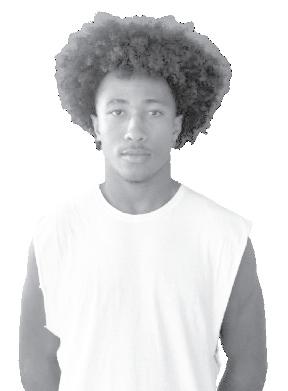
“I thought Hoco court would be a really great experience to be in and also to have my family be there with me.”
- Charles Cravings (’25)


Yaretzi Preza Staff Writer
From counting down the days to seeing gushing homecoming proposals on Instagram, this moment in the school year unites students for a momentous night. Homecoming is a flashy occasion where students can dress up and enjoy themselves mingling with friends under the starry night while celebrating a new school year.
The homecoming was a smashing hit among students in the floral makeover, as students were scattered everywhere from places from the dance floor to eating pizza in the cafeteria. The entrance was decorated with floral designs placed from every inch for an angelic night. With the innovation quad used as the dance floor, students could dance around the clock with lights flashing from every angle. Popular mainstream songs filled the air from the DJ stand, brought by SOS entertainment, playing throwbacks yet blending some beats to accentuate the evening with a fun vibe. Students used the dance floor to their advantage and created moshpits during almost every song as many if not all were jumping up and down for the music.

The Discovery building featured an enchanted hidden touch, a red carpet transforming into a runway with marquee lights, spelled out, ‘Hoco 24’ celebrating the new school year with the seniors in the
photobooths were placed outside with fun props to use soaking up the moment as photo strips printed. Near the cafeteria, games ranging from poker to Pac-Man were used throughout the night as an alternative activity for students to experience. In the cafeteria, decorated green tables were scattered around, creating a relaxing atmosphere for students to eat Chic-fil-A or enjoy some Domino’s pizza at the temptation of reaching for other hot snacks like tater tots or cooling refreshers like ice cream. While students took a break from dancing, many found themselves at the popcorn station or getting some cookies to take the edge off. Once refueled with energy, students made their way back to the dance floor as if no time had passed at all.
Before homecoming season rolled around, students at Samo got to dress for the theme ‘Enchanted Forest’. This year, homecoming took place on October 19, and students had other special events throughout Spirit Week. Other activities such as the Hoco Carnival, Pep Rally, and Homecoming game are also for the entertainment of students. In preparation for homecoming, ASB members have been putting together all the exclusive activities they have in store for a magical night in the enchanted forest. Head Activities Committee member Aubrielle Gomez (’26) gave a behind-the-scenes look at this year’s homecoming design.
“Everything is planning out great, so there’s nothing to worry about. We’ve been planning since last school year and started before school, making this our biggest event of the year.” Gomez said.
As the DJ closed the night, the song, ‘We Are Young’ by Fun, was played while students united with their flashlights. Nostalgia rushed back from 2012 and created a new great memory of homecoming with the enchanted forest lingering away. Jolie Jurenka (’25) shares her experience with this year’s homecoming celebration as one of her last memories of senior year,
“I had an amazing time with my boyfriend and friends, it wasn’t my first time but it was definitely my favorite hoco at Samo,” Jurenka said. “The walkway into the dance was great and overall exceeded my expectations.”
thesamohinews@gmail.com
Homcoming court because I wanted stu dents to look up to someone who is al ways getting involved and working hard.”


“Being a part of homecoming court is a tradition and an honor. I value the legacy of homecoming and am happy to be a part of the experience.”
- Ethan Fitzegerald (’25)

“Now is the time to have this once-in-a-lifetime experience. You are only a senior once so its fun to get up there and represent the school.”
- Ry Bardacke (’25)

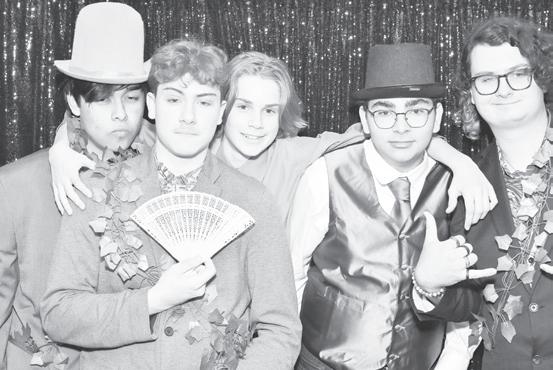

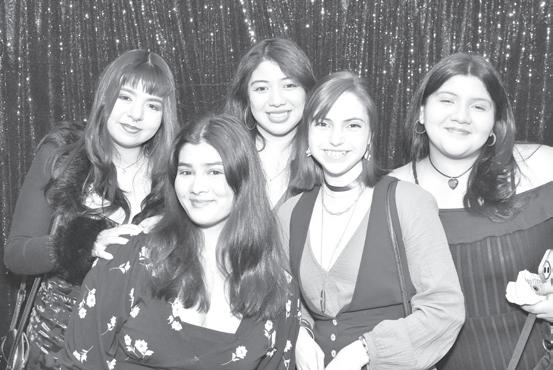



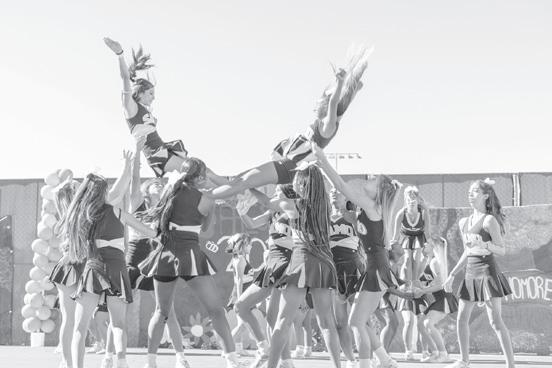



Laurel Cohn Staff Writer
Spooky season is here and with that comes all things scary. Horror movie nights are a thrilling way to spend a fall evening, especially on Halloween. For a perfect spooky film night, the following checklist is all that is needed. Go plan one!

A best friend is essential to a scary movie night. You will need them to hide behind during the spine-chilling bits. And also to talk you out of staying up all night because you are scared that a clown might appear in your room.



As with candy, popcorn is another essential aspect to a scary movie night. Whether it is freshly popped or from a bag does not matter, this will help balance out the sugar high you got from eating all that candy earlier. It’s also perfect for stressfully munch ing on in the most hair-raising parts of your chosen creepy movie.

A successful spine-chilling movie night (or any movie night really) would not be complete without candy. Candy of all varieties is essential, no matter how much anyone says that only one is enough. A fun activity to do is make a candy salad with your friends and share the most traumatizing horror movie you’ve seen (for extra spooky season points, buy the pumpkin shaped Reese’s Peanut Cups).


Fluffy blankets are necessary for hiding under (and covering your eyes with) when things get too sinister. Hot cocoa can also help keep you cozy, with the cold weather and fog rolling in hot drinks are the perfect edition to any horror movie night. But it is really perfect for calming nerves when things start to get tense. You can also use this to wash down the sweets and attempt to pick the popcorn out of your teeth.


Olivia Stephansen Staff Writer
Close your eyes and imagine the sound of a scream in a horror movie. What does it sound like to you? Was it a female voice? For as long as movies have been around, women have

Krueger. Throughout the movie, she is haunted by Krueger and unable to save herself or those around her. Nancy, along with just about every other female character in horror films, is written helpless in fight scenes. They are likened to deers in headlights as pretty, scared, and defenseless before whatever threatens them. Many of the female characters eventually die by making unintelligent choices, while men become the saviors and survivors. The movie Halloween, and essentially every spin off or sequel, features a female character being chased down by a male character. Their only choice in the movie is to flee, powerless to whatever is after them. This continual pattern of a woman with no ability to get out of peril carries the idea that a woman cannot defend herself, as her only way out is to flee not fight, reinforcing the misogynistic view that women are in need of protection.
Samo Film Teacher, Ruth Carter, has seen the damsel trope movies both in and out of the horror genre. Carter shares her opinions on the
“Their vulnerability is often emphasized,” Carter said. “Weak damsels in distress…or dependent, nurturing figures leading to narratives that explore horror in maternal instincts, like ‘Rosemary’s Baby’ or ‘The Babadook’… can be detrimental because we don’t always need a
Additionally, a key element in many horror movies is the torture of women to please the male audience. In a world where many women are already filled with vast amounts of fear
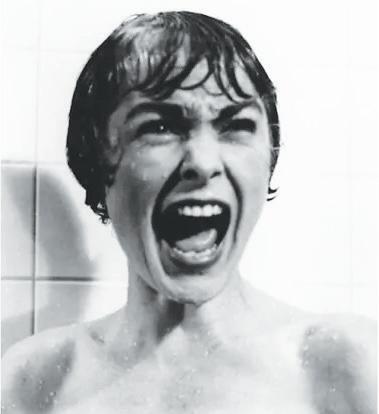
of violence, having to see that violence sexualized onscreen can be triggering and insensitive. Sexual violence being glamorized in films can make the idea normalized, or even exciting, to audiences. However, in reality, these experiences are harmful and dangerous to those not in positions of power, a role that the woman is almost always subjected to. In “The Texas Chainsaw Massacre” (2013), protagonist Heather Miller gets tied up by two cops as bait for the villain, Leatherface. During this scene, her shirt is completely open with nothing underneath. This scene is unnecessarily sexual, pleasing male viewers while brushing past the violence the woman is being subjected to. Not only is this degrading to women, but it is only targeted at women. When a man is sexualized in a horror movie, it is as the muscular and brave hero, playing on his ability to get out of violence. Women, however, are subjected to violence as the audience watches on.
Psychological thriller is the one part of horror that is female-dominated. Society only believes males are a physical threat, as they are stereo typically considered “bigger” and “stronger.”
The only time a woman poses a threat is when she is viewed as, “ill in the head”, “sick”, and “mad”. When women do have power in horror movies, viewers expect an emotionally unstable woman, often having issues with alcohol or relationships, filling the role of a femme fatale or psychological villain. Stuck in this narrative, female characters are seen as crazy rather than powerful, almost still in need of saving. While this issue is still not completely fixed, horror movies are slowly changing the narrative
Inside, the air is icy cold, making my breaths flow above me. Doors creak open at every step I take—my heart races. I shiver in my jacket as the sound plays once more, but this time it’s louder — as if I am finally face to face with what is causing it. Lights are flickering on and off with every second and heat builds as flames start to stir above me. The repeating hymn plays even louder. I feel something looking at me, and a chill races up my spine. Too scared to turn around, I run down the stairs, looking for any way out. With every exit door I try to open, I realize that I’m locked inside, the piano now playing at a forte.
As music echoes down the stairway, notes ringing in my ears, a figure-like person steps out at the end of the hallway. Everything is dead silent — there is only the whistling wind filling the air between us. I lose all feeling in my limbs as a panic overcomes me, and I wonder if this might be the end of my story.

supernatural beings,” Carter said. “Overall I feel like women in horror movies are evolving with filmmakers that are increasingly challenging traditional stereotypes and exploring more diverse and empowering representations.”
thesamohinews@gmail.com
around the halls. Students say they can sense her presence when they feel a chill in the air or step in a rain puddle that they swear wasn’t there a second before. Many students have reported seeing some sort of figure in a long, dark, flowing dress, lurking near Barnum Hall.
Those who have caught a glimpse of her describe her as sorrowful and that her presence feels most strong during rehearsals for school plays — in her time, she loved seeing the arts of young, inspired actors. One evening in the fall, not long ago, a small group of students stayed behind late to prepare for that year’s school play. In Barnum Hall, the lights kept cutting out and an eerie chill swept through the area. A young girl, Rosemary, noticed a beat-up journal on the ground with pages flipping back and forth. When she looked closer, she saw it belonged to Ms. Thompson.
As Rosemary anxiously read aloud, the words in the journal revealed Ms. Thompson’s aspirations for her students in the arts. Suddenly, a voice whispered, “Continue, child.” A chilling breeze passed over them and students froze. Their glances racing to one another, the students were compelled to honor her words and finish their rehearsal. As they ran their final scene, a flickering spotlight emerged, shining on an empty chair in the front row. When everyone cleared the stage, Rosemary took one last look at the seat. She swore she saw Ms. Thompson’s deathless grin gleaming back at her.
2. A Haunted Night Alone
I step into the pitch-black nighttime air, another evening of test corrections with Ms. Colburn done. As I walk down near Barnum, I stop with shock when I realize the Exploration Building has disappeared. From its former location, I hear a spine-chilling piano hymn from a building I’ve never seen before, drawing me closer to its call. As I walk in front of the building, I see a sign reading “History Building since 1913” plastered on with red streaks akin to blood.
The figure mumbles something I can’t quite hear. It floats into the light, revealing its true self: a ghostly figure with shaggy brown hair, dark sunglasses, and a black leather jacket. As it floats toward me rapidly, I recognize the figure. Its mumbles become clear: “Get your head in the game…” Everything clarifies; with horror, I recall the legacy of this building as a filming location for one movie in particular.
It dawns on me that I might lose my life to the ghost of Zac Efron, straight out of “Seventeen Again”.
3. The Mystery of the Lost Yearbook
As Tiffany Valentine runs into the journalism room,a beatup box filled with old yearbooks immediately catches her eye. Curiosity takes over her, and she uncovers books dated as far back as the early 50s. One seems to hold more memories than the rest — handwritten goodbyes and photographs taped over pages all dedicated to one specific senior, Sally Daniels. Flipping through the pages, Tiffany decides to search for Sally to return her precious yearbook.
However, she encounters Daniels’ police file stating a record of her death — a mysterious case that was never solved.. Determined, she sets out to discover the truth of Sally Daniels; her investigation leads her all around the Samo campus as she looks for any clues that may help her get closer. Suddenly, she stumbles upon a stone reading “Time Capsule for Class of 1954.” Breaking it open, she discovers a tape, which she connects to her computer. A video plays…
“This is a message for the class of ’54. I have Sally Daniels as my hostage and she will pay for what she did at Samohi. She has broken the trust of the underground club ‘Vampire Quire’ and will forever be in debt to the remaining students in the club. We are unaware of our plans with her, but trust us when we say that she will never again see the light of day.”
Jaw on the floor, Tiffany panics about the discovery of this video as she runs outside the building in hopes of finding
someone she can confide in. Shaking off the shock, she begins to ponder who the mystery man could be. It hits her: she’s seen this man before but can’t remember where.
The next day, she walks into first-period English with Mr. Koehler, and stops in utter disbelief as his voice triggers the memory of the night before. He is the man in the video in charge of the disappearance of Sally Daniels. When Tiffany goes to question him about his past in Europe, Mr. Koehler seems amused by her sudden interest but dismisses all suggestions of foul play on his part. As Tiffany begins to leave class, she swiftly turns back, looking at Mr. Koehler tenderly holding his copy of “The Crucible” and muttering about witchcraft — his evil chuckle reveals the fangs in his mouth, and his eyes glow red. But before she can walk out, she sees a picture set on his desk with him and a subset of students she recognizes from the police’s cold cases of missing people.
Standing among the other demonic-eyed students is Sally Daniels.
thesamohinews@gmail.com
Art by Raha Ghoroghchian / The Samohi













Athena Barefoot Staff Writer
As fall arrives, embracing seasonal recipes does more than just bring comfort, it’s a way to nourish the bodies, minds and souls. Fall recipes generally include seasonal harvests such as pumpkins, nutmeg, spices and squash. These dishes not only provide comforting warmth as the temperature drops and illness starts spreading, but are also packed with important nutrients that support immunity and health. These fall recipes celebrate the flavors of the season while continuing to provide everyone with warmth and comfort.


FALL COOKIES
Ingredients:
1 cup peanut butter
½ cup brown sugar
1 egg
1 teaspoon softened vegan butter (or regular)
1 cup Chocolate chips (or peanut butter chips)
Recipe :
- Prepare a large bowl and preheat oven to 350 F.
- Combine the peanut butter, brown sugar and egg into bowl.
- Mix well until it reaches a doughy consistency.
- Add the softened butter and chocolate chips and mix until fully combined.
- Line a baking pan with parchment paper.
- Separate the dough into equal balls and place onto the baking sheet
- Bake in the oven for 10-11 minutes or until edges are golden-brown.
- Let rest for 5-10 minutes and enjoy!!
thesamohinews@gmail.com



PUMPKIN LOAF
Ingredients:
2 cups all purpose flour
½ teaspoon salt
1 teaspoon baking soda
½ teaspoon baking powder
1 teaspoon ground cloves
1 teaspoon ground cinnamon
1 teaspoon ground nutmeg
1 ½ sticks of unsalted butter, 2 cups sugar
2 large eggs
1 (15-oz) can of 100% pure pumpkin
Recipe:
- Preheat oven to 325 F.
- Combine all dry ingredients in a medium-sized bowl and whisk well.
- In a large bowl or with an electric mixer, beat the butter and sugar until combined into a crumbly dough.
- Add in the eggs one at a time, and continue beating until light and fluffy.
- Add the pumpkin and beat until combined, at this point, it might look a little curdled or grainy, but this is normal.-
- Add the dry ingredients to the pumpkin mixture and beat on until combined.
- Transfer the batter into loaf pans and baake for 6575 minutes or until a toothpick comes out clean.


Laurel Cohn Staff Writer
The new elective Film & Video has brought a fresh set of skills to Samo students. Film and Video teacher Ruth Carter’s classes are dedicated to teaching students film & video production.
The Film & Video elective is currently working on a show, set to broadcast in the spring, enlightening students on the goings on at Samo. The show is called Viking TV and will feature various segments such as ‘Finish the Lyrics’, sports, Staff of the Month, Student of the Month, and more. As soon as they get the program going, Ms. Carter hopes students will contact them and ask to have interesting things going on around campus featured. Each episode will be about five to seven minutes long depending on the segments. Episodes will come out monthly and updates will be posted on YouTube, Instagram, and Facebook @vikingstv1.
“I have a lot of talented editors and voiceover actors. The kids have been working hard and have a great work ethic.” Carter said.
Everything for Viking TV will be done in-house. Students have a sound booth to mix the sound and edit everything together. They will also use a three-camera setup. Recently, the students have collaborated on projects to help them gain skills they will need when producing Viking TV. At the beginning of the year, they worked on shooting 30-second commercials for small businesses around Santa Monica such as Lo/Cal Coffee, Campos Tacos and a faux Samo water ad. Students were given full creative liberties and could choose between promoting a real product or fabricating a fake one. They have also been assembling a short segment on Día de Los Muertos, interviewing students on how they celebrate the holiday and show-

Ms. Carter teaching students about what equipment they’re going to be working with for their next assignment.
casing some traditions.
“This, what we’re doing here is new. I’m creating something new that’s never been done here.” Carter said.
Carter is a new teacher at Samo and in the district. She previously taught at Oceanside High and then took some time off to work on a personal film project. As a result, she won the 2020 Sony Alpha Female Grant award for Afro-Mexicans. Ms. Carter hopes to use her skills to teach her students broadcast journalism and get them internships using her contacts in the industry. Ava Gonzalez (’28) is a student in the film and video class. She said she is excited to work with someone who is a professional in the industry and has thoroughly enjoyed her time in the class.
“I’m super excited to be in a brand new program and grow a new program. We have so much new equipment and funding which is really cool.” Gonzalez said.
thesamohinews@gmail.com

PUMPKIN MUFFINS
Ingredients:
¾ cup of unsalted butter, melted and cooled for 10 minutes
½ cup of granulated sugar
¼ cup of light brown sugar
2 large eggs
1 cup of canned pumpkin puree
2 tablespoons milk
1 ½ teaspoon vanilla extract
1 ¼ cups of all-purpose flour
¾ teaspoons baking powder
¾ teaspoons baking soda
½ teaspoon salt
2 teaspoons pumpkin spice
½ teaspoon ground cinnamon
Recipe:
- Preheat oven to 375 F and line a 12-count muffin tin with paper liners
- In a large bowl, combine melted butter, granulated sugar and brown sugar, stir well.
- Whisk in eggs, pumpkin puree, milk and vanilla extract
- In a separate bowl, whisk together dry ingredients
- Combine dry ingredients with wet ingredients and fold until combined, making sure to not overmix.
- Evenly divide the muffin batter into the muffin tins.
- Bake for 17-19 minutes or until a toothpick comes out clean
- Once out of the oven, allow muffins to cool for 5 minutes before moving them to a cooling rack.










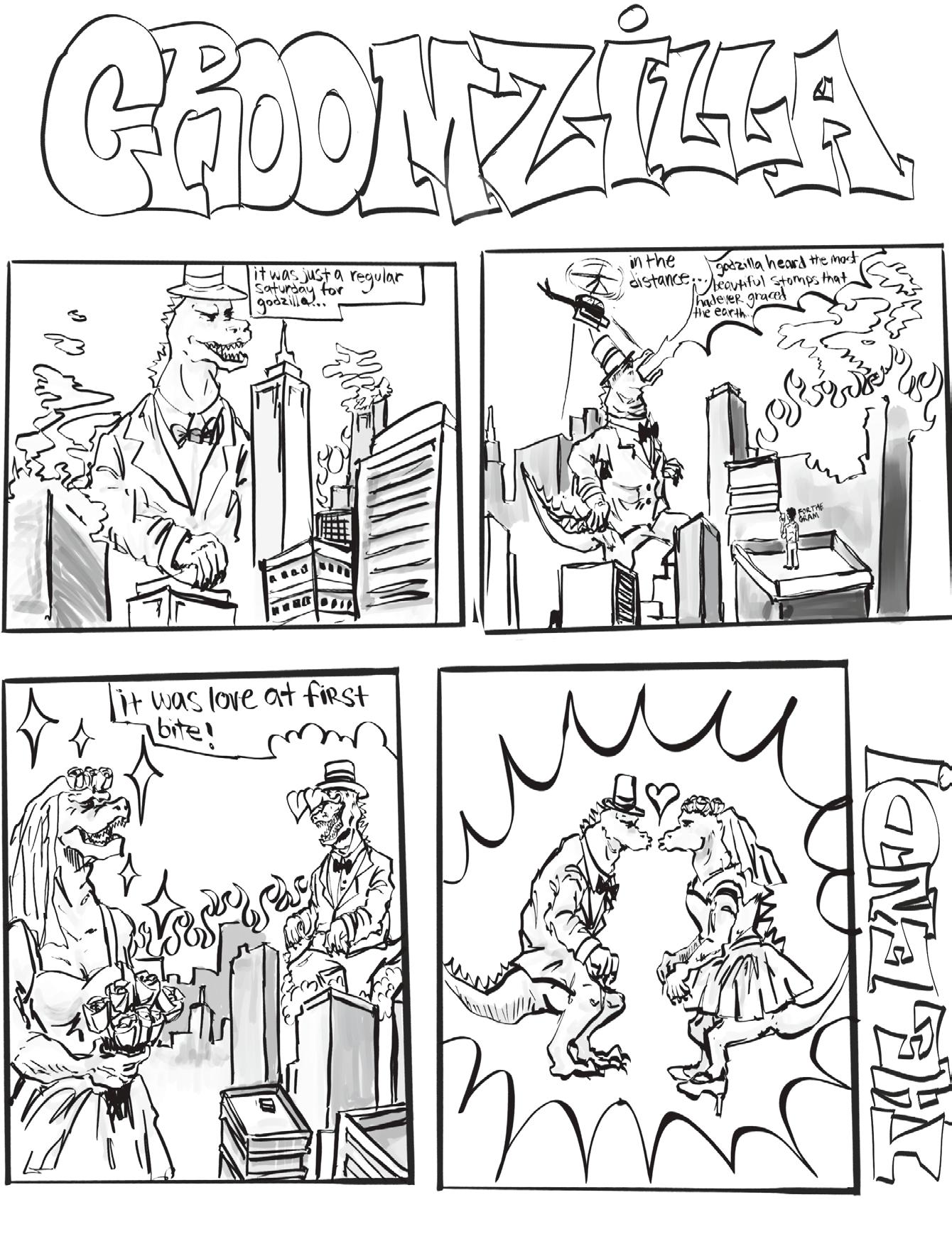
Eugene Naruse Staff Writer
On Sept. 22, the AMC Broadway 4 located on the 3rd Street Promenade closed down, marking the end of its film legacy. With the beloved Santa Monica location gone, it leaves only one AMC, the Santa Monica 7, and two other cinemas in the city: The Aero on Montana Ave. and Laemmle on 2nd St.
This closure is part of a broader trend seen post-pandemic as big chain movie theaters have struggled to regain the crowd size and sales they had prior to lockdown. At the same time, the independent cinema scene is thriving. Unique events and screenings that can’t be found anywhere else have helped make these spots stand out and stay popular with the public. Small operating sizes also help create a collective communal spirit, often a feeling that can’t be achieved at a national chain theater like AMC.
Farran Slane (‘27) shares her favorite part of the independent cinema scene.
“Independent cinemas have more sentimentality, they’re more intimate and they’re less about just going to see a movie and more about enjoying cinema,” Slane said. “Independent cinemas feel less dystopian. If you go to AMC
cinemas they have arcades and other things, but it takes away from the purpose of sitting down and genuinely enjoying the movie.”
The Aero, an independent cinema operating since 1940, has carved its place into Santa Monica history, with unique events like advance and special screenings as well as frequent in-person discussions with filmmakers and Hollywood actors.
ater, are bringing back the beauty of film and the cinema industry. With the newfound rise of local cinemas, major chain theaters must come up with things that make them more unique, whether that’s special events, better food and facilities or even lower prices.

Laemmle Theatres, which has several locations throughout Los Angeles, has also become a staple in the Santa Monica film community. Focusing on great independent, foreign, and art house cinema the theater regularly plays films other locations don’t have. The cheaper prices --compared to big chain theaters-- and buttery popcorn help the place stand out. The Laemmle on 2nd Street will surely have a dedicated community of older generations, watching both cult classics, new hits and obscure, relatively unknown movies.
There’s no doubt that the cinema scene is changing; COVID-19 was a stepping stone for big chain theaters to realize that their methods might not be sustainable for the future of streaming. Simultaneously, independent cinemas, including countless other locations outside of Santa Monica like the Nuart, Getty, and Egyptian The-



thesamohinews@gmail.com
Emma Godfrey Staff Writer
All around Samo new art clubs emerge that aspire to support student artists of all levels by creating new communities that foster artistic expression and imagination. Collage club, Crochet for a Cause Club and Zine Club provide a space for students to relax and express themselves
Collage Club, held every last Tuesday of the month in Discovery 315, is run by co-presidents Deva Bardach (’26) and Kaitlyn Eggers (’26). With the creation of Collage Club Bardach and Eggars wanted to give Samo students a space to unwind at lunch by taking their minds off the stress of school and exams through art.
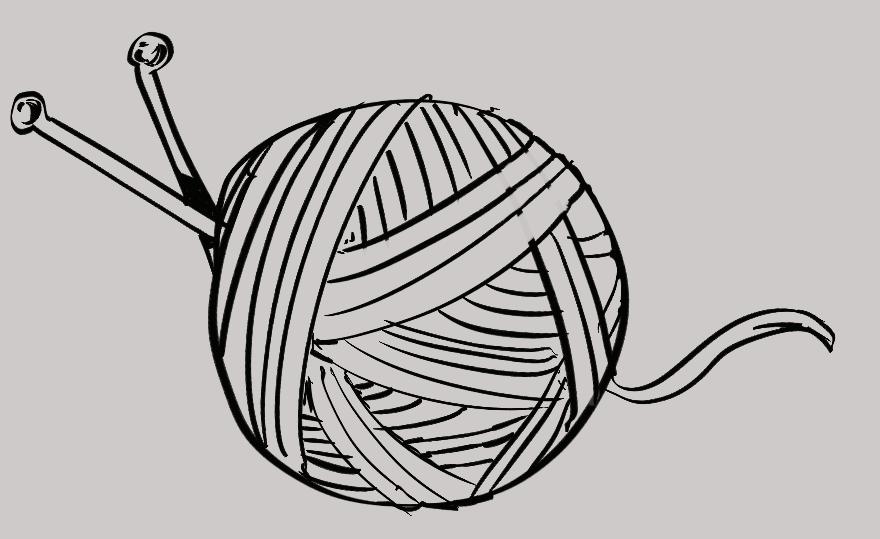
Bardach has been collaging for her whole life, but recently has rediscovered her love for it and wanted to share her passion with others.
“I love putting different things together, and I feel like collage is the perfect thing for that because you can take a photo, and add it with a little bit of your art, and you create your own thing with other things you didn’t create,” Bardach said.
Collage Club provides its members with all the magazines, photos and materials they need to create their own artwork. At each meeting, students are able to simply relax and add a little more to their collages in the peaceful environment Bardach and Eggars have created. Crochet for a Cause club, led by president Flora Gunn (‘25) and vice president Aili Forster (‘25), is held every 1st and 3rd Tuesday of the month in Innovation 306. At Crochet Cause Club, no prior experience is needed. Students will learn how to crochet items like hats, gloves and scarves with step-by-step tutorials. The club will provide hooks and yarn that members can take home to use work on projects, as well as videos and to learn how to crochet.


The beanies made in the club will be donated at the end of this semester to drug and alcohol rehabilitation centers around Santa Monica. Gunn strived to create a club that can help provide extra comfort to people in need during difficult times.
“I have a passion for mental health and mental health resources, and I think it’s especially important to try to bring light to people’s days. Also at the end of the semester, it’s nice [to donate these beanies] because of Christmas and the Holidays,” Gunn said.
Zine club, held in Exploration 261 every Thursday, is led by co-presidents Kayman Mangan (’25) and Ramona Gutierrez (’26). Zine club will provide students with time
to work on creating zines that combine art, drawings, poems, collages, informative information, and whatever more members want to add to them. At the end of the semester, all the zines will be scanned and compiled into one book to sell or distribute them.
Gutierrez sought to bring values of inclusion, equity and creativity to her club, and saw these in the people she surrounds herself with, including her co-president.
“I was inspired by Kayman, she is extremely creative and makes the most amazing art and zines. I thought a club where everyone makes art, listens to music and chats would be really fun and would be a safe space for people,” Gutierrez said.
Zine club aims to give students a space to let their creativity and originality flourish in an art form where people can express their thoughts and feelings, spread information, and communicate with others. Gutierrez and Mangan provide members with everything they need to make their very own zines such as markers, magazines, stickers and much more.
These are just a few of the many innovative art clubs at Samo, where students of all levels can find support and community through artistic creation.

thesamohinews@gmail.com
Leo Manzur, Lily Edwards Contributors
2024 has been a remarkable year for horror: from “Longlegs” to “MaXXXine” the genre has produced some of the best movies by far. However, none of these have come close to the impact of Coralie Fargeat’s “ e Substance.” is movie has broken down the barriers of what is expected of indie horror, becoming Mubi’s most successful box o ce release to this date. Its grotesque and unhinged nature stirred up a buzz online and attracted audiences all over the globe, but underneath the grotesque body horror and maximalist environment, the story makes direct commentary on societal beauty standards, anti-aging, and mother-daughter dynamics.
e lm follows protagonist Elizabeth Sparkle (by Demi Moore), a slowly fading movie star who feels unful lled and unhappy with her life as she is shoved out of the Hollywood spotlight. To combat her sudden irrelevance, she turns to a black market drug with the intent of creating a younger, hotter, better version of herself. Sparkle’s new body, named Sue (Margaret Qualley), assumes Sparkle’s old job
as a Celebrity Aerobics instructor. rough this new self, Sparkle re-experiences her young success, a taste to which she becomes addicted. Her obsession with her new life leads her to misuse the substance and face dire consequences.

e lm plays with the audience by eshing out Sue and Elizabeth as separate characters despite them being the same person. While watching the movie, you nd yourself rooting for one character over the other; empathizing with one and despising the other before ultimately being slapped in the face with the realization that they are one and the same. e immense jealousy that Elizabeth has towards Sue is entirely self-in icted, which leaves you questioning who the antagonist truly is. e movie further plays into this confusing
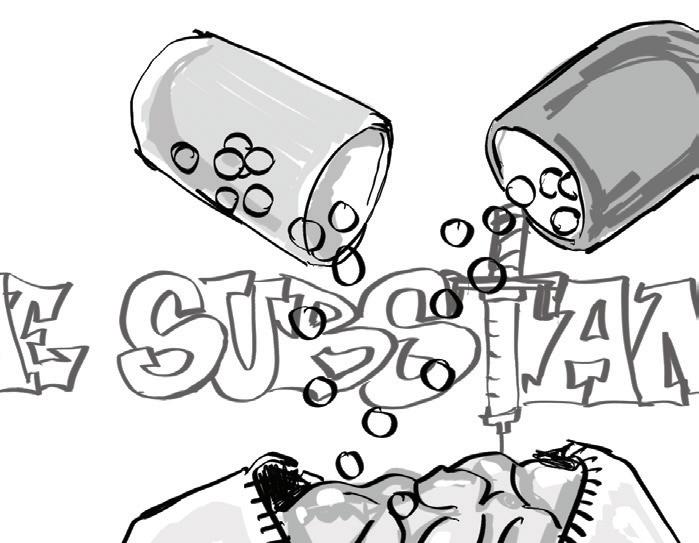
dynamic with a fuzzy, dreamlike, style of editing that places you right in the character’s subconscious.

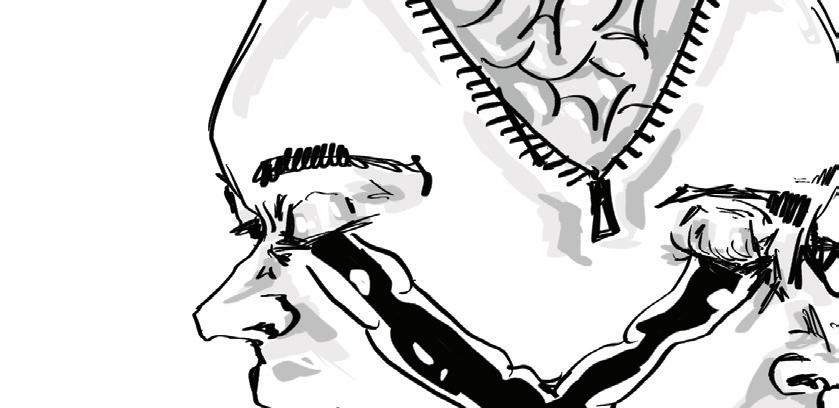
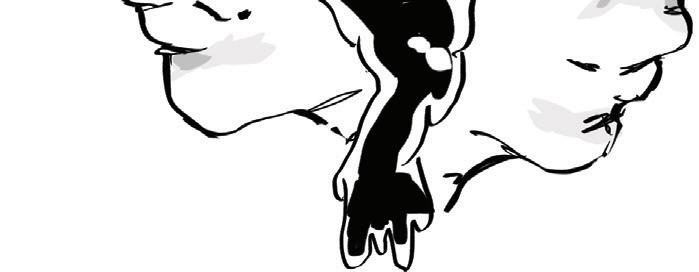
e blurry, messy cuts between shots draw the viewer into the dizzy and dissociative state induced by the drug.
Fargeat also holds the ability to take what would be considered the “male gaze” and contort it into a twisted and monstrous mess. Scenes that, in any other case, would sexualize the female body,
mirror--and almost match--the intensity and unsightliness of the bloody body horror scenes that follow. Her masterful skill of exploiting a view that is so commonly associated with pleasure and making it gnarly and brutal within the context of the story is truly remarkable.
e relationship between Sue and Elizabeth parades through a rather visceral and grotesque order. e bodily horror and gore displayed throughout the movie metaphorically represent the drug that is external validation and societal beauty standards. By emphasizing the topic of gore and bodily bizarreness, it instills the fear of the destruction of the human body, such as deformity and mutilation. By instilling this fear, the viewer can better understand the worries that society’s beauty industry generates and an appreciation for the imperfectly perfect human body. We are constantly reminded of the allure of anti-aging; the Substance battles this topic exceptionally, reminding us how this industry ultimately causes more harm than good to ourselves.
thesamohinews@gmail.com
Emma Godfrey Staff Writer
Samo Choir and Orchestra took center stage in their fall concerts and lled Barnum Hall with their harmonious voices and instruments.
e Samo Choir celebrates good times by kicking o their rst “Samohi Serenade” of

he school year by singing “Celebration” by Kool & e Gang. Rainbow lights illuminate the Madrigal Ensemble as they all party and dance together on stage.
“ e Circle Game” by Joni Mitchell, sung by some of the choir’s most gi ed seniors, lled Barnum with heavenly harmonies and put the audience at ease. Chloe Senior (’25), Leah Boumel (’25), Celine Hutchinson (’25), and Isabella Salem (’25) connected on stage, sharing sincere smiles and joyful voices. Choir students enjoyed the show both backstage and in the spotlight.
“I love getting to sing with so many di erent people of all di erent levels, ages, and genders, it’s nice how it connects us all,” said
Senior. “...I was very happy with the outcome [of the concert], I think that we pulled it o really well and everyone had fun,”
Samo’s Barbershop chorus strolled on stage to sing an audience favorite of “When I’m Sixty-Four” by the Beatles. e crowd chuckled and cheered at their playful and entertaining performance, especially at the bottle-popping sound e ect made with their mouths during the line, “Birthday greetings, bottle of wine”.
Sung by Choe Senior (’25) and Walden Sullivan (’25) was a captivating and moving duet of “True Colors” by Cyndi Lauper. Senior and Sullivan brought light and life to the stage, captivating the audience by meeting each other’s gaze to hit every note. Sullivan re ected on his pride in the hard work that led up to the concert.
“I think it’s important to keep in practice with singing because it’s hard to take a long break and return from it and I think Mr. Huls is dedicated to keeping us in vocal shape,” said Sullivan. is year Samo Choir additionally wove dance throughout their show, cra ed by choreographer Senior and lead choreographer Salem. In a mix of various dance styles, Salem and Senior led featured dancers through leaps and turns in their “Rumours, Fleetwood Mac Medley” piece, and synchronized grooves in “Everybody Talks” by Neon Trees. e crowd gasped in amazement at the unexpected acrobatic ips in “Both Sides Now” by Joni Mitchell.
“Dancing in ‘Everybody Talks’ and making eye contact with all of my friends, which included a group of people that normally
Hope Wang Staff Writer
On Oct. 24 from 4-6 PM, Roberts Art Gallary at Samo hosted a vibrant Dia De Los Muertos art exhibition. e event showcased an array of artistic expressions, featuring Ofrendas, artwork from AP art, drawing, ceramics and lm, along with contributions from John Adams Middle School. . is celebration not only honored loved ones who have passed but also brought the community together in appreciation of art and tradition.

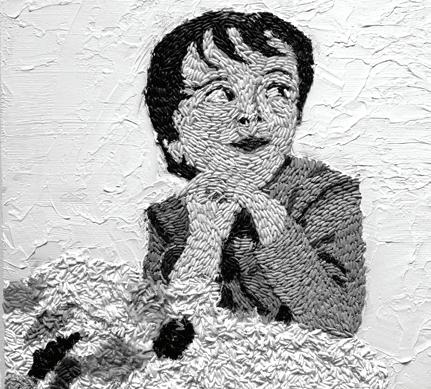










wouldn’t dance, was a very fun experience,” said Salem.
Salem professionally choreographed to accommodate all di erent levels of dancers, with movements precisely paired to the dynamics of the songs.
Samo Orchestra brought Disney movies to life at their “Disney In Concert Around the World,” performance. Orchestra students
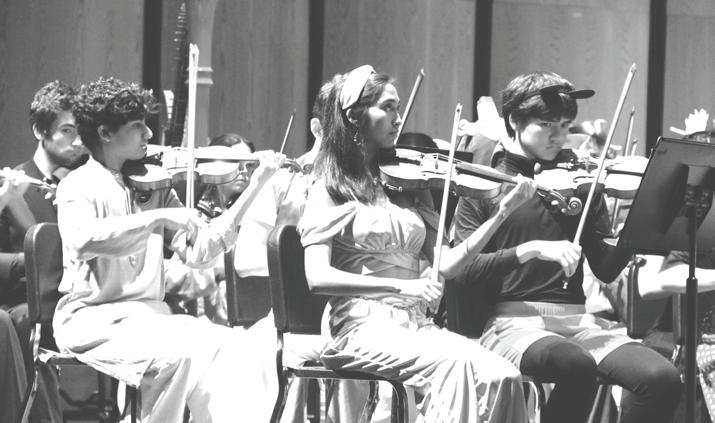
accomplished a professionally stunning concert that let the audience experience the ups and downs of Disney movies played on a screen above. Post-concert, outside Barnum Hall, stood a crowd murmuring remarking on the skilled students. Shayna Kadish (’25), a student in the Philharmonic orchestra gives her opinion on the concert.
“We are playing pieces that we have been able to put together pretty quickly,” she said.
“I think it says a lot about our potential as an orchestra this year because we’re going on a tour and we’ll be able to put together more elaborate pieces quicker.”
e Orchestra created a captivating experience where the audience, completely
immersed in the movie, felt as if they were encountering their monsters and adventures, with live music from these characters’ journeys owing through Barnum, and their ears. Leading to each performance ending in eruptions of applause.
In their seats, these eager listeners hummed the catchy tunes of every song. e entertaining atmosphere was especially captured in their performance of “Hercules”. Tessa Rogers (’25) and Brooke Merriam (’26), students in the Symphony and Philharmonic orchestras spoke on their highlights of the night.
“My favorite song is Hercules because it’s super fun to play, and I feel like that’s the song everyone enjoys hearing,” Rogers said.
“I love that we have the opportunity to play music from Disney movies we’ve all watched growing up,” Merriam remarked.
In between performances a slideshow of “When ey Were Little” came on screen. Photos popped up of orchestra students as children in Disney-themed costumes. “Aww” s were heard all around as the crowd reminisced at the adorable pictures.
Choir showcased their contemporary favorites along with the addition of skillfully choreographed dances, while orchestra played a medley of their most loved Disney songs. Both productions emphasized Samo students’ immense talent and dedication to their cra s and le the audience awestruck by their incredible capability fostered at such a young age.
thesamohinews@gmail.com
Olivia Stephansen Social Media Editor
Biopics; taking real stories and -for the most part- twisting the truth. is form of media has been increasingly both popular and incredibly controversial in recent years. Whether it’s misrepresentation, or simply at-out lies, there are evident dramatics used as tools to create certain narratives and push agendas in much of the biopic hemisphere.
Net ix series creators Ryan Murphy and Ian Brennan are currently the center of the biopic conversation due to their new hit show, “Monsters: e Lyle and Erik Menendez Story”. e morally-gray conception of their creative process isn’t hard to spot, both Murphy and Brennan were also contributors to the “Monster: e Je rey Dahmer Story” series. Suspicions quickly rise a er merely glancing at the marketing of both shows, Murphy and Brennan claim that the shows are a continuation of one another- with the Menedez brothers serving as season two of the Dahmer story. is factoid itself is harmless, but the fact that they chose to market “Monsters: e Lyle and Erik Menendez Story” as its own show, and release it was an entirely di erent show, capulets that they only care about the money.


However, where the uncomfortable creation of these series truly reveals itself is in the content itself. e rst show in the “Monster(s)” collection, Dahmer, highlights the life story of Je ery Dahmer, a serial killer and cannibal. While this show had murky moral lines, with the families of his 17 victims repeatedly establishing that they didn’t want media made about the murders, at least one thing was apparently true: Dahmer is a monster. However, this reality blurs when it comes to the Menendez brothers. e Menedez brother’s case is remarkably horri c and unfortunate, involving double homicide and copious amounts of abuse. Lyle and Erik’s parents’, Jose and Kitty, sexually, mentally, and physically abused them throughout their childhood, leading the brothers to murder them as indirect self-defense. is case, like Dahmer’s, took
place years ago, and only both brothers are still alive. e depiction of Lyle in the series is clearly entertainment-motivated, turning him into the ‘monster’ by watering down the internal contradicting themes to be more palatable for viewers. In many ways the actual case was a biopic in it of itself, with the rst trial being televised due to the Menedez’ a uent background and their father’s social status. e question of whether or not the brothers are in the wrong varies depending on the spectator, what is apparent is that their case is not even remotely on the same level as that of Dahmer, a mass murderer and predator. e series of Murphy and Brennan’s are each controversial in their own right, yet there’s still hope in the biopic industry. Patty Jenkins, writer and director of the Oscar-winning movie “Monster” brings another true-crime tale to the table. Based on the life of Aileen Wuornos, a prostitute who shi ed to serial killing a er repeated abuse from male clients. Jenkins shares the importance of truth when delving into weaving the story of the life of another.
“As long as I am not manipulating the true values of the story, that’s okay,” She said. “…as long as it didn’t change the greater truth of the story, I didn’t make someone guilty, I didn’t make her look innocent when she wasn’t innocent” Being able to draw a ne line between entertainment and respect for the truth is highly important ethically in the lm industry, as lies can harm lives and reputations.

Ryan Colvin Staff Writer
The Los Angeles Dodgers finished the 2024 regular season with the best record in Major League Baseball (MLB) at 98-64, and booked themselves a trip to the World Series after the most expensive spending spree in the team’s history.
As of Dec. 22, 2023, 29 of the MLB’s 30 teams had spent a total of $876 million during free agency. The Dodgers had spent $1.053 billion, making global headlines by signing Japanese superstar Shohei Ohtani from the Angels to a 10 year, $700 million contract. Following the signing, the Dodgers shot up the power rankings and became heavy favorites to win the World Series in 2024. Many even tipped them to finish with the best record in MLB history. While they came up short of the record, their 98 wins and 64 losses earned the Dodgers the one seed going into the playoffs. Despite the team’s success, fans weren’t ready to bask in these accomplishments just yet, including Javier Mata (’25).
“This season is a minor success as of right now, only because the Dodgers are the last one still standing from the National League West in the playoffs,” Mata said. “Including injuries, the standards that I had set for this team were met, but overall I wouldn’t say they have succeeded. History was proven again in terms of injuries.”
To the neutrals this fan criticism may seem harsh, but the Dodgers road to the first seed didn’t come without its struggles. All of their big-money moves created a top-heavy lineup, and the combination of players who hit in the 6-9 positions produced less than a third of the team’s home runs and RBIs as a result. Moreover, a barrage of injuries left their pitching staff depleted. Clayton Kershaw only managed 5 games, and rising stars like Dustin May and Tony Gonsolin missed the entire season. Even those who were brought in to compensate, like Tyler Glasnow and Gavin Stone, suffered season-ending injuries. These issues resulted in large patches of inconsistency for the
Dodgers. Despite these rough patches, Ohtani was able to stand out as one of the league’s top performers.
Though unable to pitch due to an elbow injury, Ohtani had the most productive offensive season of his career. With 54 home runs, 130 RBIs and a .310 batting average during the regular season, he is predicted to become National League MVP. Ohtani made history on Sept. 19, becoming the first player to hit 50 home runs and steal 50 bases in a single season, capping off his historic year. Isaac Kaiser (’27) considers Ohtani’s season

to be one of the best in the history of baseball.
“In my opinion [Ohtani] is the greatest player of all time, or at least in the past 100 years,” Kaiser said. “He’s a key factor of where we are right now, and he’s had a big impact setting the record with all the home runs. His 50/50 game is one of the greatest games of all time. Three home runs, 10 RBIs, six for six… I don’t think that record is getting broken - without steroids there’s just no way, nobody has that much power.”
The Dodgers’ reward for earning the 1st seed was a best-ofthree series against the San Diego Padres, the team that beat them 3-1 in the NLDS two years prior. In game one, Ohtani
continued his impressive run of form on the big stage, hitting a three-run home run in his first ever playoff game to lead the Dodgers to a 7-5 victory. The Padres stormed back to win games two and three, and the Dodgers saw themselves in the same deficit they faced two years prior. This time the Dodgers dug deep, winning both of the final games in shutout fashion to launch themselves into the next round. This stretch of games saw their injury-riddled pitching staff perform better than they had all season, tying the postseason record with 33 straight innings without allowing a run.
The next task at hand was a seven game series against the New York Mets, and the Dodgers continued to display their dominant pitching during a 9-0 victory in game one. A loss in game two saw the Dodgers come back to reality, but once again the setback added fuel to the fire. The Dodgers offense ignited, scoring 34 runs through the last four games to win the series 4-2. Consistent performances from the likes of Kiké Hernandez and midseason signing Tommy Edman, who ended up winning NLCS MVP, saw the back half of their lineup come alive at the perfect time. The Dodgers managed to break the all time record for the most runs in a series, with 46 scored across their six games against the Mets. Now, Los Angeles faces off with the other side of New York in a World Series matchup with the Yankees.
In game one of the World Series, Freddie Freeman stole the headlines with a walk-off grand slam in the 10th inning. The Dodgers overcame Ohtani’s injury scare to win 4-2 in game two, and a second successive 4-2 win for the Dodgers in game three saw them one win away from sweeping the series. In game four the Yankees finally found a spark, surging to an 11-4 victory. In game five the Yankees will be looking to build on their momentum, while the Dodgers are aiming to wake up on Halloween as World Series champions.
thesamohinews@gmail.com
Addy
Fiore Staff Writer
Santa Monica High School alumni Katie Saunders (’17) is returning to Samo as an assistant coach and teacher. Saunders is leading cross country, track and field and Sports Medicine classes regular and advanced, while additionally training to teach physiology for a future Sports Medicine pathway. With ambitious goals set for her dual roles, Saunders is back at her alma mater, bringing wisdom and experience as a staff member.
After graduating from Samo, she pursued her educational career at Santa Monica College and got her associates degree in Kinesiology with a minor in business. She then went on to Cal State Monterey Bay to get her bachelor’s degree in Kinesiology .
Saunders has had plenty of experience in both
track and field and sports medicine. Going back to her highschool days, Saunders was on the Samo track and field team from 2013-2017. While attending SMC, Saunders volunteered with Samo’s track and field team during her first year and went on to serve as an assistant coach for the following three years. Saunders transferred to CSU Monterey Bay in 2021, where she worked as a physical therapy aid and athletic training aid while also throwing for the school’s division two track and field team. Her past experiences have prepared her for her time here at Samo, and have shaped her coaching philosophy over the years.
“You can’t teach to want to, but if you want to be here I can give you all my information, all my expertise, all of my knowledge. I can answer all your questions and feed your passions with maximum enthusiasm,” Saunders said.
Although Saunders has experience in track and
field and sports medicine, this is her first year of coaching cross country and she faces a learning curve as she familiarizes herself with the sport. However, she is not only focused on learning the sport but achieving various other goals.
“I’m learning about how to structure workouts for distance runners and reasonable expectations and things to look out for. Injuries wise, my goal, I think probably for the rest of my time as a cross country coach, will be to have the fewest injuries possible,” Saunders said.
With her background in sports medicine, Saunders is able to directly apply her knowledge of injury prevention and recovery on the field when coaching. This same expertise guides her approach in the classroom, where she also has goals for her students.
“I will be getting my students CPI and AED certified. I’ll get them certified by the end of the
year. So I want them to be able to feel safe and feel confident making others feel safe,” Saunders said. Saunders is dedicated to providing her students tions, Saunders is giving her students the tools

thesamohinews@gmail.com
For a student-athlete, going to a specific high school may be worth it if your goal is college recruitment, but ultimately, it depends on many variables. Many sports schools offer professional coaching, specialized training, and competitive environments that push athletes to achieve the highest results possible and allow them to be noticed by universities. Additionally, some sports’ high school coaches have strong connections to college coaches. This helps student-athletes network with colleges and ultimately helps them get recruited.
Schools with highly successful sports teams tend to have better athletic facilities and higher level coaches, providing athletes
with a setting for athletic development to be the focus. This environment helps athletes reach their potential, increasing the possibility of being picked by college recruiters or professional scouts. Because of this, students who wish to compete at higher levels of competition may consider it a strategic choice to attend a school with an emphasis on sports, as a means of getting into high-profile competitions and networking with professional recruiters. Jackson Nelson (’26), a recent transfer and addition to the Samo football program, shares his experience transferring and his knowledge on the college recruitment process.
“The hardest part of the recruitment process is differentiating yourself from the other athletes who are trying to go to the same school. Transferring doesn’t affect the recruitment as long as you communicate
with the coaches and they still are interested. I transferred because we couldn’t recruit any players and my previous athletic director didn’t think he could have a football program. So I transferred because of football and I have better opportunities at Samo,” Nelson said.

Ultimately, the decision of choosing one’s high school should reflect the individual’s long-term goals and personal circumstances. If the student-athlete has a realistic chance of progressing to the collegiate or professional level and is fully committed to pursuing sports, a sports-focused school could be the ideal pathway. However, if they are unsure about their sports future or place equal importance on academics, a more traditional school that offers both strong athletic and academic programs might be a better fit. The key is for the student-athlete to ensure they are positioned to succeed, both on and off the field, in whatever future they envision.
thesamohinews@gmail.com
Ryan Colvin Staff Writer
The Los Angeles Lakers, led by superstars LeBron James and Anthony Davis, were eliminated in the first round of the NBA playoffs last season by the Denver Nuggets. After a fourth straight season of disappointment, the Lakers were looking to make some serious changes.
The Lakers hired head coach JJ Redick, a former 15-season NBA player whose only previous coaching experience was at the 4th grade Brooklyn Basketball Academy, and drafted James’ son, Lebron “Bronny” James Jr., with the 55th pick in the draft. These moves have raised eyebrows, with some NBA players criticizing the team. Golden State Warrior guard Klay Thompson had no urgency to join the Lakers when asked during free agency.
“I’m cool on that circus over there,” Thompson said. Jack Tan (’25), a Samo student and Lakers fan, has similar concerns.
“It’s not a serious team anymore,” Tan said. “It’s kind of sad, it’s definitely more focused on the media with the LeBron and Bronny connection. They will talk about how, ‘Bronny scored zero points’ and find a way to pump that up but whoever does really really good on the other team, the media doesn’t care. Bronny will be a success for money and business, not a success for the team.”
Despite this concern, the media hype surrounding James Jr could potentially lead to a rise in viewership and ticket sales. The prospect of James and James Jr. becoming the
first ever father-son duo to play in the NBA, let alone on the same team, has been one of the largest talking points of the offseason. On the court, the Lakers have a history of helping young players (such as James Jr.) exceed their expectations. Austin Reaves, an undrafted shooting guard, was picked up by the Lakers off of waivers and is now a borderline All-Star coming off the best season of his career. The Lakers 17th pick in this year’s draft, Dalton Knecht, has already convinced many that he was the steal of the draft after his 35 point pre-season performance against the Phoenix Suns on Oct. 17. Fans are starting to believe that Los Angeles is a great place for young talents to develop, including Samo student Stevie Lenkin (‘26).
“I think the young core is important because LeBron only has two, maybe three more years in him, and AD
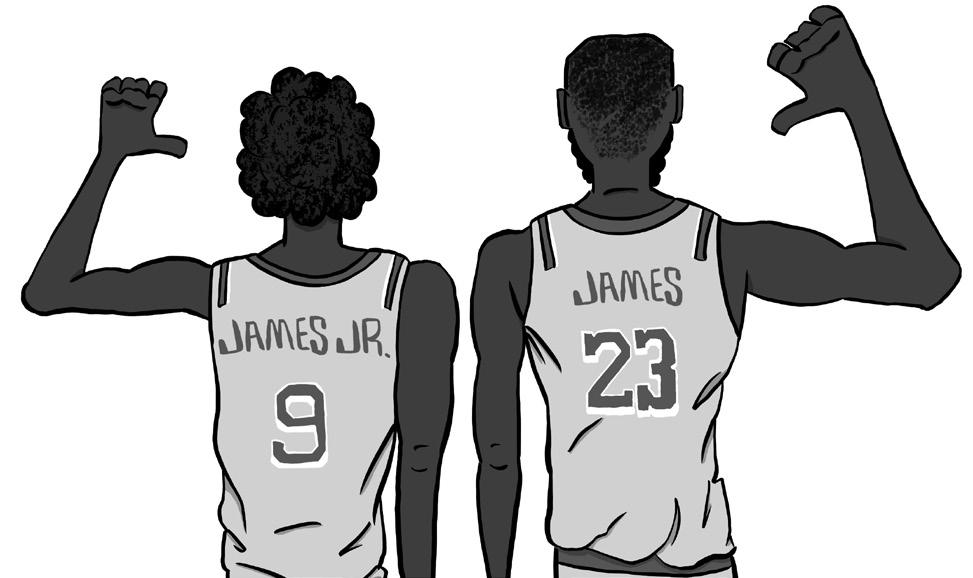
[Anthony Davis] is still a great player but he can’t be this good for that much longer,” Lenkin said. “I think Knecht was a steal - he knocked down his first shot the other day which is nice, and he had a good preseason game. I think he’s definitely a good player and can help us win a championship, hopefully.”
James Jr. has already provided Laker fans with promising signs of his own, with a 17 point performance to close out the preseason against the Golden State Warriors. Even in previous games when his shots haven’t been falling, James Jr. has shown maturity on the defensive end, averaging 0.5 steals and 0.83 blocks per game (while averaging only 15.5 minutes) during preseason.
Whether James Jr. and the rest of this exciting young core has enough to propel the Lakers to a deep playoff run is yet to be seen, and the odds are currently against them. ESPN projects the Lakers to win just 40 games this season, dropping significantly from their 47-35 record last year. However, the preseason has offered fans a newfound sense of optimism, including Holden Savage (’25).
“When you have LeBron, one of the best players ever, he just attracts so much attention that anything we do is going to get scrutinized, but I think there’s a chance we could finish top six in the west,” Savage said. “I think Hachimura and Reaves will have to step up but they’ve shown that they can. Any time you have AD [Anthony Davis] and LeBron you aren’t out of the conversation.”
Sia Kresch Staff Writer
Samo is home to many student-athletes, and many students who are excited about sports in general. Beyond the typical athletic programs, there are many sport-related clubs available at Samo. Whether students want to practice a new activity or simply discuss athletic events, each club brings together students with similar passions to share knowledge, thoughts and ideas about sports.
Samo Sports Blog, run by Co-Presidents Brooke Meshekow (’26) and Eva Boyd (’26), works to promote sports at Samo. Meeting every Monday during lunch in room D12, this club not only discusses Samo sports teams, but also uses social media to give recaps and announcements about games across all sports. Additionally, Meshekow comments on the various activities the club engages in as a blog.
“Samo Sports Blog interviews players, talks with the coaches and even takes pictures on the field,” Meshekow said.
Samo Sports Talk, a club focused on discussing sports, has meetings every Tuesday in L02. Founded by Presidents Arman Chhibber (’26) and Isaiah Fernandez (’26), and Vice Presidents George Frank (’26) and Darian Hawkins (’26), this club forms a tight knit community of sports enthusiasts. Chhibber touches on what sort of activities take place during the meetings, and how they manage to create a spirited environment. “At Samo Sports Talk, we discuss different sports topics and have a good discussion about them. We even have debates, where we analyze a wide range of topics,” Chhiberr said.
The Surf Club here at Samo is an extension of the Samohi Surf
Team, run by Presidents Sierra Pacifici (’25) and Julia Faber (’25). Other key positions include Vice President Eli Boreth (’26), Secretary Gabe Lopez (’26), Treasurer Theo Carlson (’27) and Historian Lucy Harris (’27), who are all captains of the Samo surf team. As surfing isn’t considered a CIF sport, the club was formed in tandem with the surf team in order to make surfing an available sport for students at Samo. The Samo Surf Club’s goal is to create a strong community where students can develop their surfing skills, through positive feedback and critiques. Pacifici also talks about their goal of getting out into nature, and the importance of this to the club. “We also really want to connect with nature to stay grounded as our bodies and minds grow so fast during our high school years, and we satisfy that through volunteer opportunities with Surf Bus Foundation and Heal the Bay,” Pacifici said.
The club takes place every first and third Monday of the month in I107, where they go over future contest dates, talk about team building events and look back on footage from morning practices.
Samo is also home to the Pickleball Club, run by President Ry Bardacke (’25) and Vice President Benjamin Komlos (’25). This club teaches students with all levels of experience how to play pickleball. “The thing about pickleball is that it’s such a low ceiling that anybody who’s athletic or even not athletic who knows the rules can play and have fun,” Bardacke stated.
Last weekend, the club convened to play a friendly, yet competitive, game against Venice, with a local sponsor present to watch.
Samo Pickleball Club meetings are held in D208 every Wednesday during lunch, and every Sunday at John Adams Middle School.
The Samo Karate Club, run by President Luke Shimahara (’26), is

an interactive club that teaches a new generation of students about certain aspects of Japanese culture while also practicing karate. With meetings every other Wednesday at lunch in room D214, Karate Club offers its members presentations on the basics of karate, and the culture surrounding it. Shimahara is very passionate about karate and its culture, which influenced him to create the club. “I started this club because it’s one of my passions outside of school and I wanted to incorporate it into my Samo experience,” Shimahara stated.
thesamohinews@gmail.com
some of the most devastating things to happen to any athlete. Luckily, there are ways to prevent them.
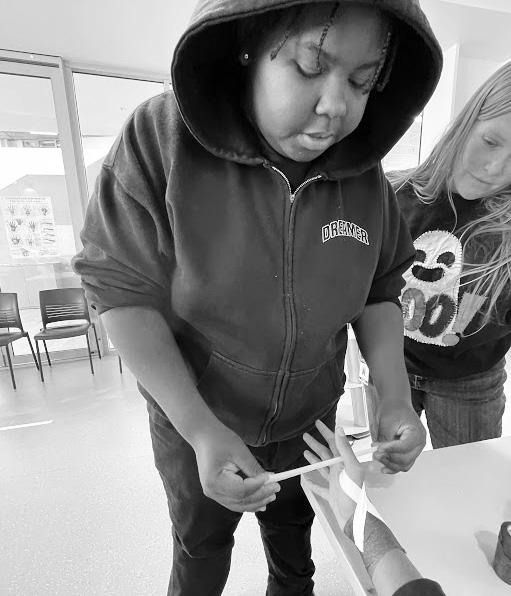
Staying healthy as a high school athlete can be especially hard considering high schoolers are susceptible to age specific injuries. Additionally, high schools typically offer less rehab resources than colleges or professional sports organizations. Coupled with the inconsistent diet and sleep schedule of most highschoolers, the demographic is at a particularly high risk of injury.
Cross country coach and sports medicine teacher, Kathryn Saunders, emphasizes the importance of stretching and rolling to avert injury.
“Stretching and rolling is really beneficial,” Saunders said. “Don’t save stretching and rolling for when something already hurts; do it before you start hurting.”
Regular stretching or rolling keeps an athlete’s muscles lean and flexible, reducing the stress that is put on the muscles during physical exertion. Saunders points out the value of a proper warm-up and cool down as well.
“We have to do a proper warm-up and cool down when we work out,” Saunders said.
“Cold muscles don’t respond to stretching very well so we kind of have to put them through the range of motion to warm them up so that they’re loose when it comes time to push them hard. A cool down helps lower your heart rate and it also helps flush out some of the buildup in your muscles.”
Sports medicine, a second-year course at Samo, teaches the treatment and prevention of injuries relating to sports. Sports medicine 2 student and varsity soccer player, Piper Forsyth (’25), has been preventing injuries for herself and other students for years. Forsyth feels taping or wrapping a body part is a necessary precaution for athletes to take.
“Wrapping is important to prevent injuries, especially if you have an area of weakness, because it helps keep your joint and muscles stabilized,” Forsyth said. “For example, if you tape your ankle, it’d be harder to roll it or sprain it to the side. Wrapping it just keeps it more stable there. There’s less of a range of motion, but that helps so you
don’t overextend anything.”
Another way to prevent injuries, not mentioned by Forysth or Saunders, but by scientists across the country, is to consume foods and beverages high in antioxidants.
Antioxidants are compounds that inhibit oxidation, a chemical reaction that can produce free radicals. In simple terms, antioxidants can reduce inflammation by preventing or delaying some types of cell damage.
Antioxidant-rich foods like berries, nuts, artichokes and leafy greens are common ingredients athletes incorporate into their diets to reduce the risk of injury.
“It is important to take the necessary measures to prevent injuries,” Forsyth said. “I see so many students get avoidable injuries.”
Injuries can halt or end what would be a promising high school athletic career. Diet, sleep, stretching, sports wrapping, warm ups and cool downs are effective ways to defer an injury.
thesamohinews@gmail.com
Athena Barefoot Staff Writer
The Santa Monica High School girls’ varsity volleyball team finished the 2024 fall regular Ocean League season as champions with a 19-5-1 overall record, clinching a spot in CIF playoffs.
As the season progressed, the Vikings managed to win two out of their first four games, but they quickly made up for their losses with a 10-game winning streak, propelling them to second place in the Ocean League. In the following month, the Vikings won eight out of their 11 games, ending their season with a record of 19-5-1. Coach Liane Sato had high expectations for the team and has continued to maintain her confidence in the team’s success throughout the season.
“The team has worked incredibly hard this season and in preseason to make sure that they’re playing at their absolute best in each game. We make sure to keep our energy high and always have fun while still keeping a strong focus on the game. I’m so proud of how the team came together this year and how hard they worked to win the
Ocean League Championship,” Sato said.
Team captains Jane Robinson (’25) and Jasmine Martinez (’26) are exceptionally proud of their ever-growing team and all of the developments they’ve made throughout the season.
“As captain, I have tried to really focus on what our girls need individually in order to play our best as a cohesive team. This has been such a great season, I am so proud of us for winning league and I’m super excited to support my team in the play-offs!” Robinson said.
Martinez highlights the work they’ve put in throughout the season and how it has continued to propel them to win League and move into playoffs.
“Our team has been working super hard this season, so seeing it pay off by winning league made us all super happy. Our goals going into playoffs are to give our best in both practice and games so we can push ourselves to improve. I’m super proud of how much our team has grown this season and how well we’ve been working together. It has been such an amazing season and I’m so proud of us regardless of how far we get in playoffs,” Martinez said.
win against Hillcrest on Oct. 26. They face Newbury Park at home on Wednesday, Oct. 30 in their next CIF matchup.
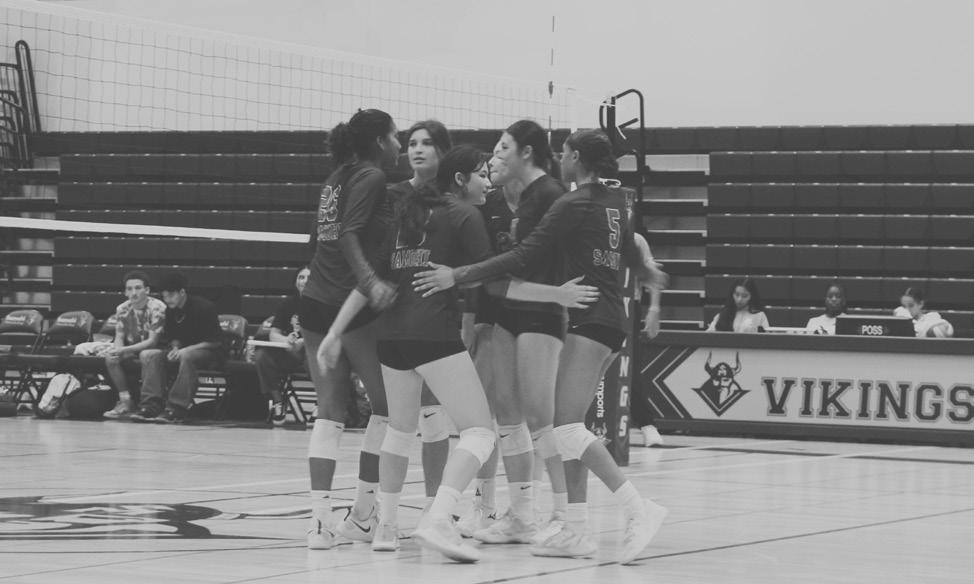
Hope Wang Staff Writer
The Santa Monica High School girls’ varsity golf team finished the 2024 fall season with a final record of 1-6, ending 5th out of 5 in the league. Despite the team’s inconsistency, both team captains, Frances Aguilar (’26) and Cash Henton (’25) made it to league finals, with Aguilar additionally advancing to the first round of CIF.
The season began on Sept. 17 against North High School, marking the first competitive match for many players. Coach Roshni Mejia mentioned how crucial that experience was for the team, highlighting the positive atmosphere despite the loss.
“It was the majority of our team’s first match… the effort and willingness to learn is what counts at this stage,” Mejia said.
On Sept. 24, the team faced El Segundo, losing narrowly by a score of 67-60. Mejia expressed
optimism about their progress, emphasizing that they are constantly lowering their scores.
“My goal is to narrow the gap even more… every improvement counts as we head toward league finals,” Mejia said.
The team’s perseverance paid off on Oct. 1 when they achieved a thrilling 197-198 victory against Redondo High School. Ophelia Harvey’s (’27) impressive birdie was a major highlight of the match.
“Seeing my progress made the experience really fun and rewarding,” Harvey said.
However, the team faced setbacks in their next match against West High School on Oct. 8, resulting in a loss that left them with a 1-6 record. Henton, playing in her final season, expressed her hopes for the team next year under the leadership of Aguilar, and reflected on the season’s end.
“It’s going to be a challenge to have them really locked in and in the right mindset to play. Every-
one just needs to make sure they are practicing all the time… I think they will be nice and prepared in her [Frances Aguilar] hands,” Henton said. Aguilar also reflected on the season, and shared upcoming goals for next year.
“I think more effort could have been put into different sections. Many people focused on just one area and improved there, but were lacking in others. Personally, I think I played well, though I had the same issue and tried to improve it towards the end,” Aguilar said.
With Aguilar moving on to CIF, Coach Mejia shares her expectations.
“I just love the idea of her going there, having a good time, and going for the experience,” Mejia said.
With league play finished, the team has shown significant efforts toward improvements and personal success. Coach Mejia expressed pride in the team’s bond and the strides they’ve made together.
“They have worked extremely hard and bonded so well as a team,” Mejia said.

Raha Ghoroghchian Art Editor
For the first time in years, Samo girls’ tennis has gone almost undefeated in league. This season marks the Vikings’ first year of Ocean League play, and they have already managed to make it through the regular season and into the CIF playoffs.
Many changes to the team have been made this season with both new players and captains, Allison Gee (’25) and Avey Thompson (’25). The team feels strongly about their captains and attributes a portion of their success and unity to the compelling leadership they provide, including varsity player Ava Brara (’27).
“Our captains, Avey and Allison have done an amazing job supporting the team, and I can’t thank them enough for the encouragement they’ve given me. We give each other pep talks before matches and cheer each other on after matches since the three of us have to play singles which is very physically and mentally exhaust-
ing. Overall I’m so happy with everything we’ve done this year and hope it can continue next year,” Brara said.
So far, the team only has had three losses overall, with only one being a league game. In their league, they started off with a 10-8 win against Culver, followed by an 18-0 win against Inglewood. They continued their streak with a 13-5 win against Geffen and a 16-2 victory over Beverly. In their second match against Inglewood, they won 18-0 again. Then, they beat Culver 11-7 in their second matchup, and most recently lost against Geffen in an extremely tight match. After tying 9-9 in matches against Geffen, they had to review the game count, resulting in a loss of Samo by only 4 games.
Currently, the Vikings have a 8-3 record in overall play and a 5-1 record in league play, putting them first in the Ocean League. CIF playoffs will start Wednesday, Nov. 6, and their opponents will be determined the day of.
Halfway through the 2024 cross-country season, the varsity teams have made a name for themselves in their first year in the Ocean League. So far, the boys have won two meets and the girls have won one, coming second in others. With performances like these, the team is on track to qualify for the CIF Preliminaries, needing a top-three finish in Ocean League to do so.
In their first league meet of the season on Nov. 6 at Columbia Park, Samo won first overall. The girls’ and boys’ varsity teams both got a perfect score for the first time ever, with the girls placing first through seventh place and the boys placing first through sixth, and ninth. Varsity athlete Phoebe Benun (’25) commented on the team’s performance.
“The varsity girls did great working on some new race strategy, and everyone had a lot of fun getting to try out the league,” Benun said.
The cross-country team’s success this season started early on Sep. 20-21 with the Woodbridge Invitational, racing against

thesamohinews@gmail.com
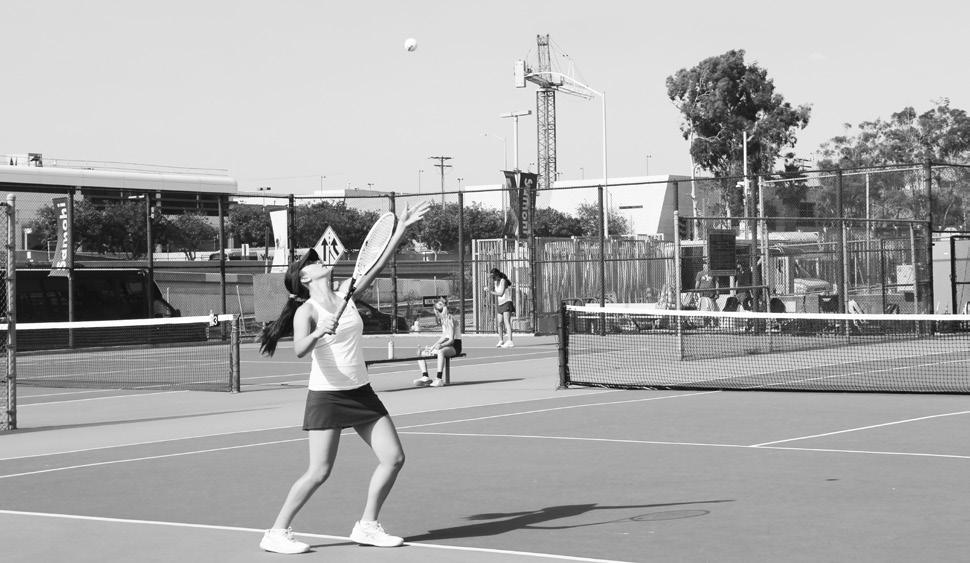
thesamohinews@gmail.com thesamohinews@gmail.com
teams from all over the country. Racing in the evening on a flat course, many athletes on the team set new personal records. The boys’ team won their race led by Kingsley Lin (’27) who placed third. The girls’ team earned sixth place led by Cleo Topp (’25) who came in at 15th.
A week later on Sept. 28, the team competed at the Bellarmine/ Sacred Heart Invitational, racing the hilly course at Griffith Park. The girls’ team took second in this race, only six points behind first, while the boys’ team placed sixth.
The cross country team will have their last league meet at the Ocean League Finals on Nov. 6 to determine if they will qualify for CIF Preliminaries on Nov. 15. Currently ranked first in league, the team is preparing to advance both the girls’ and boys’ teams to CIF. Varsity athlete and captain, Maeko Gross (’25), shares her excitement about qualifying for CIF.
“As we approach our final league meet, we’re determined to perform at our best again, aiming to return to the state meet we attended two years ago,” Gross said.
thesamohinews@gmail.com
Yaretzi Preza Staff Writer
currently holds an overall record

their final home game against Peninsula that will conclude their regular season. Special leadership has been shown by the captains throughout the season that has built a stronger team and community of players.
The Vikings’ have seen much growth since their 9-21 loss to Laguna Beach at the beginning of the season. Their following home game resulted in a 41-6 win against Sylmar, gaining momentum for the team. Samo brought this new confidence and momentum with them to their next game against Hueneme. The game ended with a score of 46-12 which placed another strong victory on the Vikings’ record. Finally, Samo’s most recent game, the homecoming game, ended with a 14-28 loss against Redondo.
Captain Wyatt Brown (’26) comments on how the ups and downs of this season will provide the team with both growing and learning opportunities,
“There’s beauty in losing and finding other opportunities to become better and change our ways,” Brown said.
To culminate the 2024 regular season, the Vikings’ will
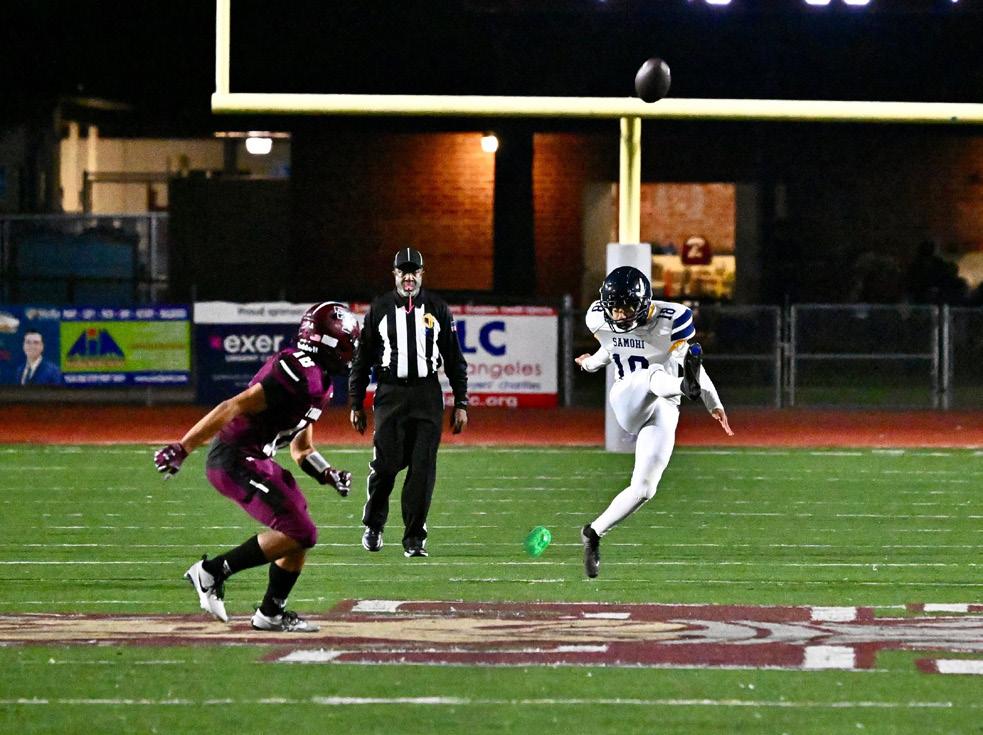
compete in their last home game on Friday, Nov. 1, versus Peninsula. This game will also pose as a celebration for the seniors on their annual senior night. If the Vikings’ emerge victorious, they will place themselves in a better position to secure a spot in the CIF Playoffs with an at-large bid that will be announced the following Saturday, Nov. 2nd.
thesamohinews@gmail.com
Samo varsity boys’ water polo ended their regular league season with a win on Wednesday, Oct. 23 against Malibu High School. They are now moving forward into Division lll CIF playoffs. Since their opening home game on Thursday, Aug. 29, 2024, against Milken High School, the team has grown considerably with their defensive strategy and communication in the water. Captain Jackson Colby (’25) reflected on the growth of the team as they get ready for CIF.
“We’ve really grown as a team overall. At the beginning of the season we were playing as individuals, but now we’re playing together as a team,” Colby said.
Boys’ water polo will go into CIF with a record of 1614 in overall play, and 2-4 in league play. They have had
many memorable wins including one against Venice High School that ended with a final score of 24-1. There were

also losses that the Vikings’ were able to improve and learn from, such as their third home game against Ventura which concluded with a final score of 12-16. Varsity player Joseph Bowers-Disney (’27) elaborated on something the team is trying to improve.
“Our energy is always really high in the first and second quarter. And then in the third and fourth it starts to drop off, which we’re trying to work on,” Bowers-Disney said.
The Vikings’ first game of the CIF playoffs was against Beaumont High School on Tuesday, Oct. 29. Samo hosted the game in the Drake Pool and took a 23-10 win, advancing them to the next round of CIF. Samo boys’ varsity water polo has their next game on Thursday, Oct. 31, 2024 at against Flintridge Prep, which will be hosted by the Vikings.
thesamohinews@gmail.com
The Samo flag football team finished their regular season off strong, being crowned Ocean League champions and qualifying for the CIF Playoffs. The Vikings ended their regular season with an overall record of 9-6 and a league record of 6-0, taking home the league title for the second season in a row with an undefeated record.

Team captain Anica Mindes (’25) is proud of the dedication and hard work displayed by her teammates. With a successful regular season behind them, Mindes and her team are hoping to carry forward their good work into playoffs.
“This season has really shown how much each and every girl on the team is dedicated and hard working,” Mindes said. “We turned a difficult preseason into a learning lesson that we transformed into winning the league championship and hopefully playoffs. The success we’ve had this season has just been a reflection of who we are as individuals, and as a team.”
Player Kalea Oshidari (‘26), a second-year athlete on the team, is confident in the team’s ability to succeed in playoffs after 2 years of preparation.
“I’m really excited going into CIF, I feel like we’re going to do really good because we’ve been preparing for basically 2 years with two full seasons for this,” Oshidari said.
In their first CIF matchup, the Samo Vikings beat the
thesamohinews@gmail.com
